ROAD - RAIL - AIRPORT - PORT - URBAN - UTILITY

Laughter: the best medicine for construction


Laughter: the best medicine for construction

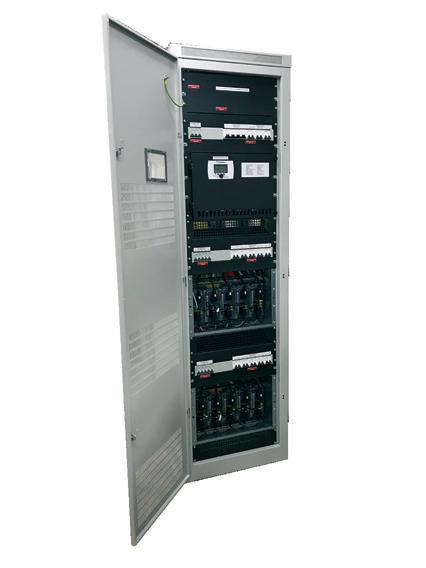
Scan to subscribe to Infrastructure Magazine’s weekly newsletter – delivered to your inbox every Wednesday morning.
Published byMonkey Media Enterprises
ABN: 36 426 734 954
C/- The Commons, 36–38 Gipps St, Collingwood VIC 3066 P: (03) 9988 4950 monkeymedia.com.au
info@monkeymedia.com.au infrastructuremagazine.com.au news@infrastructuremagazine.com.au
Editor April Shepherd
Assistant Editor
Stephanie Nestor
Journalists Tess Macallan, Kody Cook, Steph Barker, Sarah MacNamara
National Media Executives
Rima Munafo, Brett Thompson, Ryan Sheehan
Design Manager
Alejandro Molano
Designers
Danielle Harris, Jacqueline Buckmaster
Marketing Manager
Radhika Sud
Marketing Associates
Rhys Dawes, Isabella Predika, Georgia Rogers
Digital
Marketing Assistant
Emily Gray
Publisher Chris Bland
Managing Editor
Laura Harvey
ISSN: 2206-7906
Ihope our first magazine for 2024 finds you safe and rested after the summer break.
In this issue, we discuss some of the biggest topics coming into the new year, such as workplace culture and how – when it comes to worksites – laughter truly is the best medicine, alongside a large focus on AI maintenance monitoring, asset management using digital innovations, and the plethora of uses for digital twins.

Our focus on digital solutions explores the macro and micro impacts for the sector, such as cost savings, increased compliance, offloading of risk surrounding public infrastructure, increased safety for workers, and less community and environmental impacts due to shorter delivery times – plus many more.
Supporting this technology focus, we also have a fantastic piece reflecting on how the industry’s approach to the equally important area of sustainability has evolved over the years. Contributed by Ainsley Simpson, outgoing CEO of the Infrastructure Sustainability Council, there’s no better person to reflect on our journey with sustainability, and her insights here are an important read.

This issue is a bittersweet one for me, as it symbolises the end of my time as Editor of Infrastructure Magazine, and our sister publication, Council Magazine. To say it has been a joy is an understatement, and I truly have enjoyed telling the stories of this sector and getting to know the industry inside-out.
I leave the magazine in the very capable hands of our Managing Editor, Laura Harvey, who not only taught me everything I know about editing in the B2B space, but knows the sector intimately – having been Infrastructure's first Editor back in 2016.
Wishing you all the best in 2024 and beyond.
April Shepherd Editor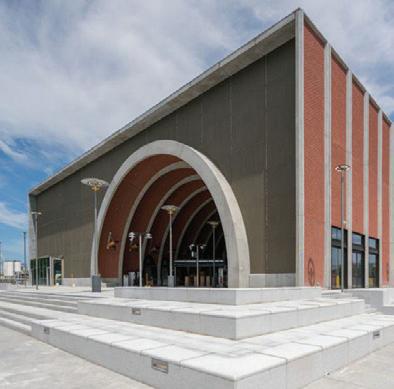


TRAINING AND SKILLS
BY PEOPLE, FOR PEOPLE: THE SECRET TO SUSTAINABLE INFRASTRUCTURE
In her eight years at the Infrastructure Sustainability Council, Ainsley Simpson has seen tremendous change across our industry; and in particular, a swelling of support for a more sustainable infrastructure industry post-COVID. Here, Ms Simpson reflects on her time at the council, driving the sector to embrace the benefits that sustainability offers.
INTEGRATING IMMERSIVE TECHNOLOGIES INTO AUSTRALIA’S HERITAGE INFRASTRUCTURE PRESERVATION
At the confluence of tradition and innovation, Australia’s cultural heritage infrastructure faces a pivotal moment. Recent years have seen renewed preservation efforts for our heritage infrastructure; and this, combined with exciting emerging technologies, has the ability to transform our cultural heritage history.
RETHINKING STEEL: THE ROLE OF MATERIALS IN NET ZERO
TACKLING
WITH
PROGRAMS
With the trade sector facing a skilled worker shortage across a range of industries, the New South Wales Trade Pathways program is looking to boost the number of qualified tradespeople in the state, and is specifically designed to attract and support partially skilled workers, mature workers and women.
WHY LAUGHTER IS THE BEST MEDICINE FOR THE CONSTRUCTION SECTOR’S FUTURE
While the construction sector takes itself very seriously, this stoic approach hinders growth and creativity in the sector, with many workers reluctant to approach their leaders with new ideas for fear of challenging industry norms. According to a researcher from Bond University, the secret to overcoming challenges and driving innovation may lie in telling a good joke.
BUILDING THE FUTURE: INTEGRATING BUILDING MODELS INTO GEELONG'S DIGITAL TWINS
In the ever-evolving landscape of urban development, local governments are increasingly embracing innovative technologies to streamline their operations and enhance decision-making processes. One such technology gaining prominence is three-dimensional building models. Here, we take a closer look at the concept of building models, their varying levels of fidelity and their significance for local government professionals.
NEW DATA AND TECHNOLOGY SET TO REVOLUTIONISE OUR ROADS
As groundbreaking vehicle and infrastructure technologies are deployed, and massive new data sources emerge, experts believe our traffic management systems will be revolutionised.
ARE YOU READY? MANDATORY CLIMATE REPORTING
INEFFABLE CRYPTOGRAPHY: A NEW APPROACH TO CYBERSECURITY FOR CRITICAL INFRASTRUCTURE
THE EMERGENCE AND IMPACT OF CAMERA AS A SENSOR TECHNOLOGY
nbn® SMART SOLUTIONS PARTNER PROGRAM
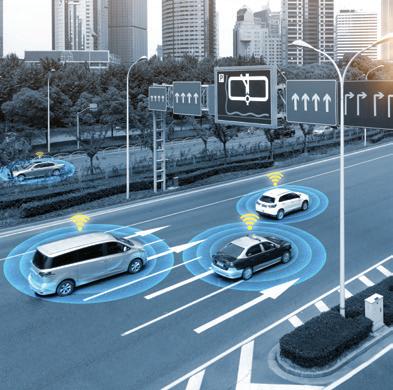


With maintenance costs at record highs across the country, the use of AI is increasing the efficiency of local road upkeep, by predicting where and when works will be needed ahead of time. Here, we look at how the City of Canterbury Bankstown is using new technology to improve its road maintenance services.
A BLUEPRINT FOR THE FUTURE OF BATTERIES SUCCESSFUL ASSET MONITORING IN THE MODERN AGE
8 TIPS FOR EFFECTIVE STAKEHOLDER COMMUNICATION
Effective communication is paramount for success in any project, enabling leaders to navigate an intricate web of relationships and interests to create an environment built on trust and cooperation. In this article, we outline eight key tips that help make stakeholder management and communication a breeze.
MAPPING, GIS AND SURVEYING
AND SIMULATE: AWARD-WINNING DIGITAL TWIN FOR NSW PORTS
With responsibility over key commercial shipping ports, Port Authority of New South Wales (Port Authority) turned to digitalisation to visualise its assets and facilities in a digital twin. This innovative project earned Port Authority an award for digital innovation, with the digital twin enabling remote monitoring, improving understanding of port activities, and driving environmental initiatives.
Outgoing Chief Executive Officer, Infrastructure Sustainability Council
Ainsley joined the Infrastructure Sustainability Council (ISC) in May 2016, and for almost a decade she has brought her exceptional management, leadership and business experience to the organisation. Ainsley has a distinctive track record in professional services, where her expertise has steered organisations towards sustainable growth and innovation. Her leadership at ISC reflects her commitment to driving sustainability within infrastructure, aligning with the Council's mission to foster sustainable practices across the industry. With a background that marries science with sustainable management, Ainsley's leadership at the ISC has been pivotal in advancing the council's vision. Her approach to leadership is informed by a deep understanding of the technical aspects of sustainability, coupled with a strategic mindset towards business and management. Simpson's tenure at ISC has been instrumental in promoting sustainable infrastructure development, making her a key figure in the industry's ongoing evolution towards greener, more sustainable practices.


Dr Ehsan Noroozinejad is a Senior Researcher at the Urban Transformations Research Centre (UTRC), Western Sydney University, and an AEC consultant, where he specialises in Resilient Construction and Infrastructure. With a wealth of experience, Dr. Noroozinejad previously held a prestigious position at UBC Smart Structures in Canada. He also holds numerous memberships on committees and commissions, including the FIB, ASCE, MECLA, ASME, ANSHM and many more. Dr. Noroozinejad has authored over 130 indexed journal papers and published seven books on his areas of expertise, which span resilience-based design of structures, digital twins in construction, and reliability engineering, among others.
Assistant Professor of Management, Bond University
Dr Ahmad Siddiquei is currently working as an Assistant Professor in Management at Bond University. His educational background includes a PhD in Management, Masters in Business Administration and Bachelors in Business and Information Technology. Ahmad has a diverse industrial experience, majority associated with the fast food, information technology, and telecommunication industry in Australia and Pakistan. Ahmad’s PhD thesis focused on temporal leadership in predicting project team task and social performance via team processes. His current research focuses on leadership within project teams, sustainable leadership in the tourism, IT, and construction sector, and sustainable work practices. Ahmad has extensively published in high-quality journals and presented his research at international conferences.

With over 15 years of experience in leading multidisciplinary teams across various levels of government and industries including smart cities, digital twins, spatial sciences, technology innovation, business process integration, and data management, Dr Adam Mowlam is a seasoned and award-winning expert. Currently, he serves as the Head of the Smart City Office at the City of Greater Geelong, one of Australia's largest municipalities and recipient of the 2022 International Smart City of the Year at World Smart City Expo. Additionally, he is a Member of the Global Advisory Committee for Digital Twin Cities at the World Economic Forum, providing strategic insights and expertise in this field. Prior to this, he held positions as the Digital Twin Strategic Lead with the Victorian Government and was instrumental in establishing the Smart City Program with Wyndham City Council, which won the 2017 National Award for Excellence in Local Government.


Tide Foundation
Michael is a co-founder of Tide Foundation, a deep tech start-up reimagining the way humans interact with the digital world. He’s a seasoned entrepreneur with a rich history leading the development and go-to-market of transformational software. Michael was an academic professional at the University of Illinois and currently serves on the advisory board of the Children’s Medical Research Institute.
Joanne Hall Senior Lecturer, RMIT UniversityJoanne Hall is a Senior Lecturer in mathematics and cybersecurity at RMIT. She has enjoyed leadership roles within RMIT's cybersecurity curriculum including internships coordinator, program manager and curriculum developer. Her research spans the human and technical aspect of cybersecurity with mathematical topics including quantum key distribution and cryptographic protocols, as well as human-centric topics including curriculum design, talent management and the cybersecurity needs of small businesses.


In a significant milestone for Victoria's Metro Tunnel project, construction has finished on the first of the five new Metro Tunnel stations, due to open to passengers in 2025.
After six years of construction, the construction on Arden Station is complete. This project began with excavation, and since then, workers have:
♦ Dug out 330,000 tonnes of rock and soil
♦ Built the massive brick archway and facade
♦ Poured the concrete for the station platforms
♦ Laid lengths of steel rail through the tunnels
♦ Installed the escalators, lifts and the Victorian-first platform screen doors
In the first few weeks of January, crews worked on the finishing touches at Arden Station. Below ground they installed paving, seating and passenger information displays. Above ground, work took place on landscaping, paving, and installing signs, seating and bicycle hoops.
Work is continuing on the other four underground stations – Parkville, State Library, Town Hall and Anzac – with Parkville expected to be the next station to be finished.
Arden Station’s completion was brought forward so it could become a test case for the remaining stations. Over the coming months, the project team will test station systems to make sure they work together. This includes passenger information displays, platform screen doors and ventilation. They will troubleshoot issues and run software updates before rolling these systems out at the other stations.
Arden Station will become the centrepiece of a new biomedical and health sciences precinct for North Melbourne, accommodating up to 34,000 jobs and around 20,000 people by 2051.
Featured image: Major construction at Arden Station is now complete. Image credit: Victoria’s Big Build
Contracts have been awarded for major overhaul works on the M80 and Eastern Freeway, as part of Victoria’s North East Link Project.
The Eastern Freeway Upgrade will include more than 45km of new lanes and traffic management systems with the aim of delivering an eleven minute reduction in travel time between Springvale Rd and Hoddle St, 10km of walking and cycling paths and a rebuilt Koonung Creek Reserve.
Nexus – made up of Laing O’Rourke Australia Construction, Symal Infrastructure, WSP Australia and Arcadis Australia
Pacific – has been appointed to deliver the first part of the $5.7 billion overhaul of the Eastern Freeway from Burke to Tram Road.
The M80 Ring Road Upgrade will add 15km of new lanes from Plenty Rd to
the new North East Link, an upgraded interchange at Grimshaw St and new walking and cycling links.
AMA – made up of Acciona Construction Australia, AECOM Australia, and MACA Civil – will deliver the $3.8 billion M80 Ring Road Upgrade.
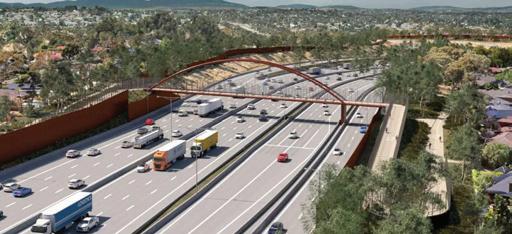
A render of the completed freeway upgrade. Image credit: Roads Australia.
Both projects are jointly funded by the Victorian and Federal Governments, with works expected to be completed in 2028.
Roads Australia congratulated its members on being awarded these contracts that will support increased efficiency for commuters across Melbourne’s north and east.
Queensland’s $88.2 million Mount Morgan Pipeline project is progressing, with the first pipes laid marking a key milestone in the project.
The 28km potable water pipeline will provide long-term water security to Mount Morgan, providing certainty and prosperity to the community.
Once complete, the pipeline and associated works will bring an end to water carting and ensure the future needs of both Mount Morgan and Gracemere are met.
The Mount Morgan Pipeline is jointly-funded by the State and Federal Government and Rockhampton Regional Council.
The project is expected to deliver an economic boost to Central Queensland with approximately 50 jobs set to be created as well as benefits to Central Queensland communities.
The project includes:
♦ Construction of a 28km potable water pipeline from the pump station at Gracemere to Mount Morgan
♦ Upgrade of the Old Capricorn Highway pump station
♦ Construction of a new reservoir and new pump station at Lucas Street Gracemere
♦ New pump station and small reservoir at Moonmera, which is approximately halfway along the pipeline route
♦ Upgrade to the Razorback Road leading into Mount Morgan while the pipeline is being laid
Significant construction will progress in the first half of the year. Construction of the new reservoirs, pump stations and widening of Razorback Road will commence later in 2024. These works will also support projected growth in Gracemere, ensuring the community has the water security needed to grow and thrive.
The project is anticipated to be completed in September 2025.
Mount Morgan residents have been on level six water usage restrictions since March 2021 due to the prolonged drought conditions and previously low levels in Mount Morgan’s Number Seven dam.
Rockhampton Regional Council has been funding approximately 20 water carting trucks per day to deliver potable supplies to Mount Morgan for more than 30 months, with the Queensland Government contributing $10.8 million toward carting costs.
Federal Minister for the Environment and Water, Tanya Plibersek, said, “We announced funding for the Mount Morgan water supply project late last year and so I am pleased to see work commencing today.”
Ms Plibersek said that the project is critical to ensure that Mount Morgan has access to reliable water for generations to come.
“It’s water infrastructure projects like this that ensure Australia has a strong regional heartbeat”.
Senator for Queensland, Anthony Chisholm, said, “Queenslanders are well aware of the threat droughts pose to our environment and the economy, and while this summer hasn’t been as dry as first thought, we need to make sure that we’re as prepared as possible for when we inevitably encounter another drought.
“Collaboration is the key when taking on projects such as these and the Australian Government is proud to partner with the Queensland Government and Rockhampton Regional Council to implement this crucial project.”
Queensland Assistant Minister for Train Manufacturing, Regional Development and Jobs, Bruce Suanders, said, “Not only is this project creating jobs during construction but a secure water supply bolsters jobs growth for existing businesses in the region and brings more businesses and families to the area.”
Rockhampton Mayor, Tony Williams, said, “This project is a game-changer for Mount Morgan. We know that we simply don’t have the catchment size and rainfall to provide that vital water security the town needs over the long-term.

Mr Williams said that the Mount Morgan Pipeline will ensure that the community can grow and share in the jobs and economic opportunities being pursued as a region and mean real and tangible benefits for local residents and business.

The Western Australian Government has released a new Pipeline of Works dashboard, which outlines $8.7 billion worth of public infrastructure projects.
The dashboard has been designed to assist with construction industry planning and preparing to bid for government tenders.
The interactive dashboard features current and planned non-residential buildings and other infrastructure projects, many of which are managed by the Department of Finance and form a key part of the State Government’s $43.9 billion Asset Investment Program.
The dashboard, in conjunction with the State Infrastructure Plan and State Budget Papers, is expected to increase transparency around infrastructure spending and provide a trusted source of information with updated forecasts and data to attract new entrants to Western Australia’s building market and encourage increased competition and innovation.
The State Government has said that the Western Australian construction industry is thriving, with a number of projects currently underway and many more planned, leading to additional job opportunities and making the state an attractive place for people interstate and overseas to work and live.
The dashboard provides information about many of these major projects including hospitals, schools and other developments.
Western Australia Treasurer, Rita Saffioti, said that the State Government’s record $43.9 billion Asset Investment Program is setting up the state for the future and providing opportunities for local construction businesses and workers.
“This dashboard will be a key tool in helping these local companies to plan ahead, prepare and bid for potential jobs and make adjustments to their business as required, like increasing their workforce, to deliver these vital projects,” Ms Saffioti said.
Western Australia Finance Minister, Sue Ellery, said that the Pipeline of Works interactive dashboard demonstrates the State Government’s commitment to enhancing economic and social outcomes for the state as it continues to create jobs and opportunities through government spending.
“The interactive dashboard assists local businesses as they plan and prepare to bid for government tenders relating to non-residential and other infrastructure projects,” Ms Ellery said.
“This will also support efforts to expand market capacity to deal with the current and future work volume.
“I encourage local industry to click on to this new userfriendly dashboard and view the upcoming tendering opportunities across Western Australia.”
To access the dashboard visit: wa.gov.au/service/ government-financial-management/procurement/pipeline-ofworks
We’re very excited to announce the opening of our new Quest Apartment Hotel in Christchurch, Quest on Kilmore.
This is the 4th Quest property to join Christchuch City. Make sure you book now to experience this brand new property in the heart of Christchurch.
To celebrate our brand new Quest, we’re offering a special opening price of $135 per night, for a limited time*.
Book your next stay at Quest on Kilmore.
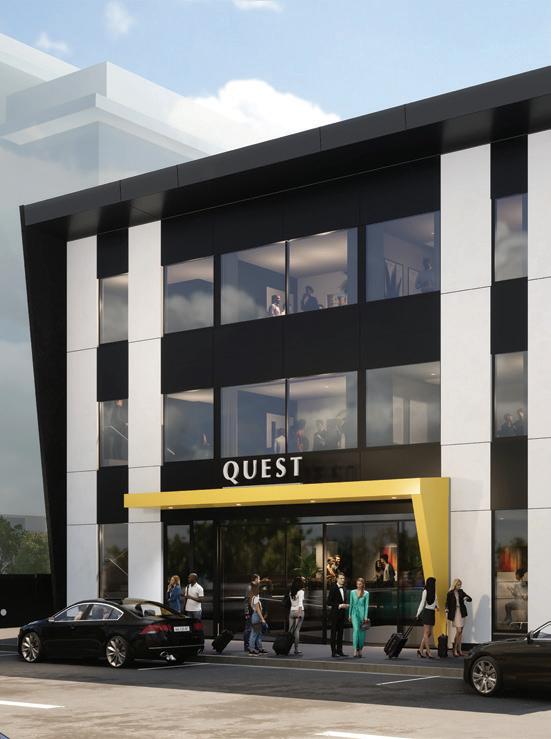


Building with nbn gives you the power of choice and flexibility to pivot, create or expand as you need.
Our dedicated nbn® New Developments team are specialists in serving the needs of developers. With national capability and local expertise, you will get support and knowledge relevant to where you build and operate, with service that is focused on you.
Make nbn part of the plan

The Australian Institute of Quantity Surveyors (AIQS) has released its 2024 report on the state of Australia’s construction industry.
The report finds that while the Australian economy still faces challenges, the outlook is one of overall optimism.
A downward trend in inflation is expected to continue due to eased supply constraints and reduced domestic activity pressures.
Sustained public and business investments, alongside ongoing recovery in international student and tourism sectors, are offsetting household sector weaknesses. This, coupled with a robust labour market, has resulted in a modest improvement in GDP growth compared to projections from the 2023–24 Budget.
The report finds the outlook for the Australian construction industry to be positive, with the following factors expected to support growth in the coming years:
♦ The economy is expected to grow at a moderate pace, which will provide support for the construction industry
♦ The Federal Government has committed to significant infrastructure spending in the coming years, particularly in areas like transportation, renewable energy and social infrastructure
♦ The Federal Government is also implementing policies to address the housing affordability crisis, which will lead to increased demand for new housing construction
♦ State Governments are reviewing their planning and approvals processes to streamline the development process and generally reduce delays
♦ The residential construction sectors will benefit from Australia’s expected population growth as this will create demand for new housing, infrastructure, and commercial space
♦ The construction industry is increasingly adopting technology to improve efficiency and productivity, leading to the use of prefabrication, modular construction and digital twins – this will likely drive growth in specific segments of the industry
The construction industry also faces several industryspecific challenges. The report states that addressing the following challenges will be essential for the industry to continue to grow and prosper:
♦ Labour costs are expected to continue to add pricing pressure in regions where the capacity exceeds demand, which will put pressure on project budgets and profitability
♦ The cost of complying with complex differing national and state regulations is a significant burden for construction companies, particularly small businesses
♦ The risk to projects in regions where the capacity exceeds demand, such as in Queensland. Such a disparity may lead to budget overruns, especially in the lead-up to the Olympics
♦ Government and private project viability issues (i.e. increased costs and elevated interest rates) are causing delays
♦ The need to adapt to climate change by building more resilient infrastructure – this will require additional investments and changes in construction practices
♦ Meeting the growing requirements to reduce embodied carbon and other sustainability imperatives
♦ A significant shortage of skilled workers, particularly in areas like carpentry, plumbing and electrical trades, is driving up wages and making it difficult for companies to find and retain talent – this is due to factors such as an ageing workforce, inadequate training programs and competition from other industries
♦ Infrastructure projects limiting the availability of key trades
♦ The private sector is still waiting to re-enter the market
♦ Australia's construction market is not experiencing uniform outcomes across regions – different areas are facing distinct challenges and opportunities
♦ Subcontractors are generally keen to bid work but there is caution with risk being priced in
♦ Interior trades (e.g. partitions/ceilings) maintain high pricing without signs of easing
♦ Stabilisation of AUD to help ease pricing pressure While there are still challenges that must be adequately addressed, 2024 is forecast to bring a cautious growth and optimism around a more robust future.
Headline speakers include:

Philip Helberg Chief Executive Officer Infrastructure WA

Rebecca Moore Government Architect WA Department of Planning, Lands & Heritage Member, National Urban Policy Forum Australian Government

Bileen Nel Director Infrastructure Hilltops Council

Coralie Williams Director - Project Advisory & Evaluation Infrastructure Australia

Louise Adams Chief Operating Officer Aurecon

Catherine Lloyd Head of InfrastructureAsia/Pacific Mercer

Nicholas Lander Director, Climate Change Physical Risk & Resilience Aurecon

Leah Kelly Deputy Director GeneralInfrastructure & Regional Strategy QLD Department of State Development, Infrastructure, Local Government & Planning

Ravi Prasad National Environment & Sustainability Manager Seymour Whyte Group

Sonya Campbell Deputy SecretaryCommercial NSW Treasury

Camillo Masci Executive General Manager- Building CPB Contractors

Jamahl Waddington Head of Infrastructure JLL

Sonja Johnson Chief Executive Officer Regional Development Australia - Tropical North

Michelle Bisson Executive Director Planning & Environment City of Newcastle

Dr Kim Johnstone Ph.D. President Australian Population Association


In her eight years at the Infrastructure Sustainability Council, Ainsley Simpson has seen tremendous change across our industry; and in particular, a swelling of support for a more sustainable infrastructure industry post-COVID. Here, Ms Simpson reflects on her time at the council, driving the sector to embrace the benefits that sustainability offers.
When the first sod on the Walkerston Bypass was turned in May 2022, some residents had been waiting more than forty years to see the day. Once complete, this 10km stretch of road will have an extraordinary impact on the local community by offering heavy vehicles a more efficient link from the northern Bowen Basin to Mackay.
The project team, led by the Queensland Government’s Department of Transport and Main Roads, overcame many challenges to achieve an IS Design Rating of ‘Excellent’. The project garnered applause for reducing embodied emissions by 53 per cent, by developing a new operational energy modelling methodology for grid emissions and by delivering a market innovation in the form of a mobile plant-mixed foamed bitumen plant.
These achievements are important for a market that is transforming. As far as the community is concerned, that around 1,000 trucks won’t trundle through the town, passing schools and businesses each day, is what really matters.
In reflecting on my six years leading the Infrastructure Sustainability Council, it may seem strange to start with a story about a small regional bypass. It’s true that I’ve seen some incredible projects take shape, from Sydney Metro to Auckland’s City Rail Link, over the last six years. But infrastructure’s most powerful impacts are in hearing directly from the people it serves.
Walkerston Bypass was not the first time this realisation came barrelling home to me. One of my very first projects, as a freshly-minted environmental consultant in South Africa, was a bulk water supply network in rural settlements which provided tap access in 200 metre intervals, uplifting health and quality of life for the people living in an entire regional council.
I could see that the benefits of infrastructure investment were enormous; but as an industry we often lost sight of who we were serving. We got more caught up in the how of delivery – the quickest and cheapest way to meet contractual and regulatory requirements – rather than the why of making people’s lives better.
I joined the Infrastructure Sustainability Council in 2016, first to oversee technical and business services, before taking on the CEO role two years later. In 2018, the year of the Council’s tenth birthday, discussion about the ‘why’ did not resonate. Purpose and impact weren’t words used in the infrastructure space. Selling the business case for sustainable infrastructure was hard enough.
But several key milestones have changed the way we think about infrastructure in Australia and New Zealand, and that has driven a compelling and game-changing conversation about what sustainability delivers and who benefits.
I consider 2022 a catalytic year for sustainability in Australia. It was, not at all coincidentally, the 10-year anniversary for the Infrastructure Sustainability Rating Scheme, designed by industry for industry. Momentum for positive change was intensifying.
In 2022, the Australian Government legislated the muchawaited net zero target. On announcing its 43 per cent emissions reduction target by 2050, the Albanese Government mentioned ISC’s advocacy work as a proof point for action. Reshaping Infrastructure for a Net Zero Emissions Future, work which commenced in 2019 in collaboration with Climateworks Centre and ASBEC, confirmed that 70 per cent of emissions
are enabled by infrastructure. This report, coupled with Journey to Net Zero, which we developed in partnership with Roads Australia and Australian Railways Association, underscored the importance of upfront decision-making so we don’t lock in infrastructure enabled emissions for a half a century or more.
The focus on carbon has unlocked new conversations about the integrated nature of infrastructure. People acknowledged, finally, that we can’t focus on carbon without considering how we use infrastructure and the products that are embedded in our infrastructure. That means thinking about decision making at the earliest stages – during planning, design, procurement and tendering. And that can only happen by bringing more people together, through national initiatives like Infrastructure Net Zero. Having all the relevant voices around the table elevates other areas of sustainability too – whether that’s circular economy thinking or delivering greater benefit for regional communities. Ripples turned into waves.
Another gamechanger was the IS Council’s work to quantify the return on investment of sustainable infrastructure. This cost benefit analysis confirmed higher net benefits could be achieved across all infrastructure sectors with IS Ratings. The report projected a conservative minimum of $1.60 in benefit for every dollar spent – and this figure could be as high as $2.40. This was over and above the productivity dividend. This research encouraged people to think beyond the small slice of time in which costs matter, and instead to consider the lifetime value of infrastructure assets. Findings highlighted that the IS Rating Scheme builds capability – a value driver that began turning heads in 2022 when the industry was looking to bolster productivity, collaboration, innovation and continuous improvement.
And this brings me to another gamechanger. At the end of 2022, Infrastructure Australia published its market capacity report. This estimated that labour shortages had surpassed 214,000 and that we needed more than double the available workers just to complete the current pipeline of work.
Rather than maintaining a narrow focus on the asset being delivered – whether that is duplicating a rail line, building energy transition infrastructure or knocking down a stadium to build another one – a much larger proportion of the industry started talking about the people they were building for and, just as crucially, the people they were designing, building and maintaining the infrastructure with
Pre-COVID, we were weighed down by a massive infrastructure deficit. At the time, the mindset was about cost and speed of delivery. The COVID-induced infrastructure boom showed us that we could do things differently, but we fell short on the people power. Our disrupted supply chains struggled to keep pace and procurement reform was critical. Suddenly, the importance of technical skills and deep experience – in other words, people – became paramount.
This crystalised the enormous challenge for infrastructure construction. Despite decades of effort to improve diversity, just 12 per cent of the workforce is female. We have a huge untapped labour force of female talent in Australia; building our future nation is dependent on that talent. Recalibrating our policies and strategies to attract more women has allowed us to think differently about all people, which is building a far more inclusive industry which values and respects difference as the source of all innovation.

A more diverse workforce doesn’t just plug skills gaps. It also means we can tap into the spectrum of perspectives of people who will use our infrastructure. Every day, whether it’s the water we drink, the power we use, the way we communicate or commute to work, we are reliant on infrastructure. Infrastructure employs 11 per cent of the Australian workforce. But 100 per cent of the Australian population is impacted by infrastructure. We didn’t always think about it this way, but infrastructure is delivered by people for people. The purpose of infrastructure is to enable people to thrive. It’s that simple.
So, what does the future of sustainable infrastructure look like? This is something I’ve been asked a lot lately, as my tenure as CEO of the Infrastructure Sustainability Council comes to a close.
In the last few years, as more people embrace best practice, we are starting to democratise sustainability in the infrastructure sector. What was once in the minds of a few people is now becoming visible at every level of every organisation and in every link in the supply chain. The load is lighter because we are lifting together.
We will have new challenges as we transition to infrastructure assets which are fit for informed long-term investors, be they public or private. What will come into even sharper focus is the need for more strategic, integrated and intergenerational planning. This means considering how our engagement practices evolve to be fit for partnership; how regulatory processes are made fit for supporting responsible delivery at pace; and how our workforce capacity readies to be fit for asset management at scale.
The four-fold growth in the IS Council’s membership is clear evidence of a profound shift in attitudes. So is the tripling of IS ratings. We had more than $297 billion of assets under rating in 2023 and an engaged member base with a combined annual turnover of more than $50 billion. We now welcome financiers, investors, manufacturers and asset owners among our members and our team has grown to 40-plus. We can make bigger waves across a full suite of rating tools, across all asset classes, and across all Australian states and territories and in Aotearoa New Zealand.
Everyone is engaged and motivated to build infrastructure by people for people. Some are in the starting blocks; others are taking giant strides ahead. It doesn’t matter where you stand, once you get started, better never stops.
Safer products mean a safer workplace for everyone. It’s another way Fosroc leads the market.


As a leading manufacturer and supplier to the construction industry across Australia and New Zealand, Fosroc are committed to reducing RCS levels below the hazardous threshold to ensure our products are safer for workers to use.
However, wearing a dust mask is still recommended due to the cementitious powder nature of the product and should only be used in well-ventilated areas to avoid inhaling dust. Always follow the safety directions and wear the recommended PPE requirements as directed on the SDS.
Fosroc. Future Proof. At Fosroc we take safety seriously. Our Fosroc cement-based powder products (RCS) hazard free*, meaning workers will not be exposed to hazardous levels of RCS when mixing the powder with water.
The consequences of air circuit breaker failure can be financially costly and potentially dangerous to personnel. Retrofit solutions can help address this issue by allowing end users to modernise their air circuit breakers with minimal downtime.
Retrofitting of air circuit breakers (ACBs) is typically 80 per cent cheaper than replacing an entire switchboard, with the key components of the system able to be quickly replaced.
NHP’s ACB retrofit solutions are specifically designed to allow the existing switchboard to remain fundamentally unchanged, with only the obsolete ACB replaced.
Existing busbars and cables remain unaltered, therefore simplifying the installation process and reducing downtime. As well as improved safety and functionality, modern ACBs also clear short-circuits much faster than older models. This means that the incident arc energy is correspondingly lower, which in turn reduces arc flash hazard.
The NHP ACB retrofit solution has been designed according to relevant Australian and New Zealand standards and recognised industrial practices, ensuring the controlled removal of ACBs that are obsolete and potentially dangerous.
With retrofit and upgrade options available for most brands and models of ACB, NHP can work within the existing switchboard environment to provide a cost-effective solution.
The most likely time for an incident to occur in a switchroom is during electrical and mechanical operations, such as switching, isolation and racking of circuit breakers. Most similar products currently available on the market still require humans to enter the switchroom to fit the racking device while the system is live. They wear PPE, but that is the least effective means of reducing risk in the hierarchy of control.
NHP’s TemRack iR is an integrated, remote racking device, protecting personnel from hazardous conditions during switchgear operations, as they can be located away from the switchgear, minimising the risk of injury. This improved safety solution is especially important for sites which must maintain ACBs and perform racking IN/OUT operations.
NHP’s Services and Solutions team offers the installation of the TemRack iR as part of a new ACB build or via a retrofit service to Terasaki AR2 ACBs, allowing users to minimise risks and maximise safety of your personnel.
Poorly maintained ACBs can lead to catastrophic product failure during operation. The consequences of this can be lost

production, significant downtime, costly repairs and financial penalties from government safety authorities if on-site personnel are injured.
NHP created the Total Care Package, which includes yearround support, an emergency back-up service, extended warranty and many other beneficial features, all bundled into an annual payment.
NHP is committed to supporting our customers for the life of their project and beyond. Equipped with comprehensive product knowledge, our technicians are committed to delivering the best practice of electrical services, while providing an exceptional customer experience.
Take advantage of NHP’s Total Care Package, and the peace of mind that comes from comprehensive product knowledge and best practice electrical services.
The NHP Services and Solutions team helps you achieve your goals with services designed to minimise downtime, stabilise maintenance costs, and modernise plant assets.
NHP brings together internationally recognised power distribution and protection products with local knowledge and expertise, and a local footprint – to deliver best practice services from concept design, through to installation, project management and after-sales service.
NHP understands the complexities of your project, and that’s why our products and service offerings are designed to help overcome any issues that may arise.
No matter how good a product may be, it is nothing without dedicated people to support that product; NHP is committed to excellence in servicing the needs of our customers.
If your project is focused on a profitable, safe and sustainable operation, our customised value add service and training offering is the place to start.
For more information on NHP Services and Solutions, call your local NHP Account Representative: Australia – 1300 NHP NHP nhpservice@nhp.com.au New Zealand – 0800 NHP NHP sales@nhp-nz.com
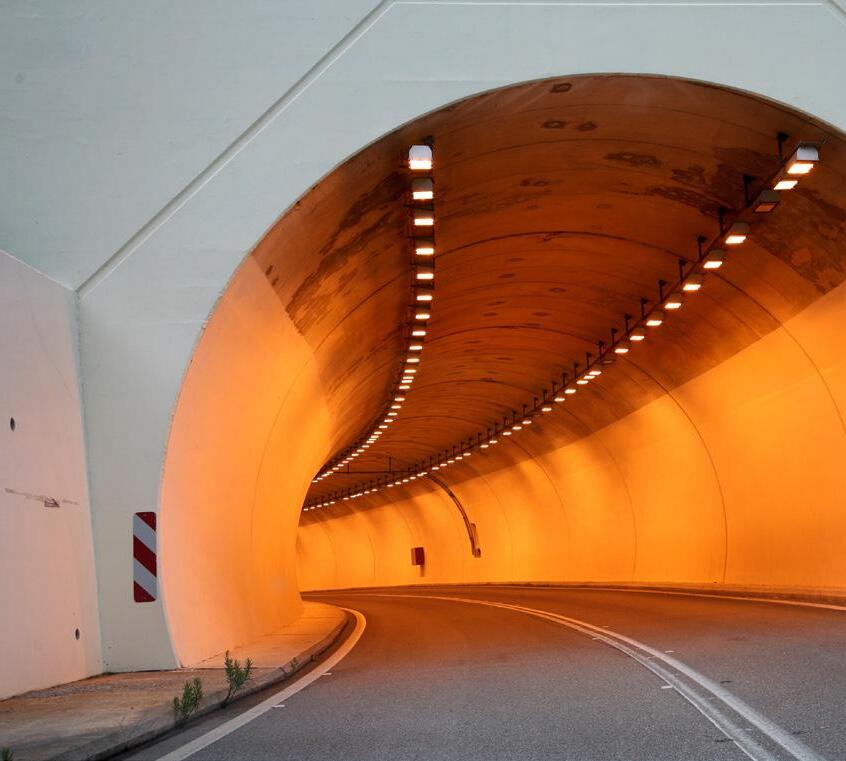
Now designed and built for outdoors
■ Maximum durability in outdoor environments with corrosion protected surface
■ Tested under UV radiation according to IEC 61439-2:2020, with roof and side covers protecting approximately 95% from sun
■ Ingress protection IP56
■ Toe-out plinth enabling easy outside mounting
■ Freedom to choose electrical components and switchgear from your component manufacturer.


Dr
EhsanNoroozinejad, Urban Transformations Research Centre, Western Sydney University and Dr Aso Hajirasouli, Department of Architecture, Western Sydney University

At the confluence of tradition and innovation, Australia’s cultural heritage infrastructure faces a pivotal moment. Recent years have seen renewed preservation efforts for our heritage infrastructure; and this, combined with exciting emerging technologies, has the ability to transform our cultural heritage history.

Recently developed technologies have revolutionised the global preservation landscape, and they have significant potential applications within the Australian context. As we navigate the complexities of safeguarding our tangible and intangible heritage, the rise of technological interventions – signalling a decisive 70 per cent dominance over traditional conservation methods – beckons a reassessment of strategies. Embracing 3D digitalisation, immersive AR/VR experiences, and IoT ecosystems, Australia’s heritage sector has the potential to redefine its modus operandi.
We’re now at a critical juncture for the integration of advanced digital methodologies into Australia’s heritage preservation infrastructure. The use of such technologies represents more than an evolutionary step; it signifies a paradigmatic leap towards ensuring resilience and dynamic engagement with our storied past.
In the world of heritage conservation, technological progress on a global scale has augmented the capabilities of cultural custodians. Recently, we’ve seen the ascendancy of 3D digital technologies, which have fundamentally transformed the conservationist’s toolkit.
High-resolution 3D scanning and photogrammetry have enabled the precise digital replication of artefacts and sites, facilitating virtual preservation and analysis. These models serve as invaluable archival records and provide a basis for structural integrity assessments using Finite Element Analysis (FEA) simulations.
The emergence of AR/VR technologies has ushered in a new paradigm for cultural engagement, leveraging immersive simulations that bridge the sensory gap between digital and physical realms. These applications not only enhance visitor experiences but also serve as interactive platforms for education and remote conservation assessment.
Furthermore, the integration of IoT infrastructures into heritage management systems has been transformative. Sensor networks and intelligent data processing capabilities deliver comprehensive diagnostics of environmental conditions, structural health, and visitor interactions in real-time.
Predictive analytics, derived from IoT-generated data streams, underpin proactive conservation strategies, enabling anticipatory rather than reactive maintenance measures. Together, these technological advancements form the bedrock of contemporary heritage preservation efforts, encapsulating a dual commitment to innovation and the safeguarding of humanity’s cultural patrimony.
Australia’s stewardship of its cultural legacy faces a pivotal moment as the preservation of tangible and intangible heritage infrastructure grapples with environmental, technological, and socio-political challenges. The nation’s multifaceted heritage, ranging from Indigenous sacred sites to colonial edifices, demands a nuanced approach to conservation. Critical assessment of the current preservation strategies reveals a dichotomy: while some heritage sites are well-preserved models of conservation excellence, others are at risk, lacking the necessary frameworks and resources for adequate protection.
The adaptation of advanced technologies has been instrumental in fortifying Australia’s heritage conservation endeavours. For instance, the application of digital scanning and 3D reconstruction technologies has not only facilitated the restoration of landmarks like the Sydney Opera House, but also ensured the safeguarding of imperilled Indigenous rock art through digital archiving. Evaluations underscore the potential for augmented reality (AR) to revitalise narratives around intangible heritage, allowing stories and traditions to be experienced in situ, thereby fostering a deeper public connection and understanding.
In this technological context, architectural wisdom converges with cutting-edge interventions to meet Australia’s unique heritage needs. Through this synthesis, innovative case studies have emerged, exemplifying successful integrations of technology in heritage conservation, such as the use of drones for inaccessible terrain surveying and the adoption of environmental monitoring sensors to preemptively address potential damages. These instances underscore the vast potential of technology-infused methodologies in curating Australia’s historical narrative for future generations.
Smart Cultural Heritage Management (SCHM) leverages cutting-edge technologies to yield significant benefits that transcend mere preservation. Economically, the digitisation and virtualisation of cultural assets can open new revenue streams through virtual tourism and digital exhibitions, attracting global audiences and investment. Culturally, SCHM facilitates a deeper engagement with heritage, allowing for interactive experiences that foster a greater appreciation and understanding across diverse populations. The digital reincarnation of historical artefacts and sites can also bridge generational gaps, ensuring that the legacy and lessons of the past are preserved for future generations.
In the educational sphere, SCHM serves as a dynamic tool, integrating with curricula to bring history to life and spur academic research. It also plays a crucial role in documenting intangible heritage, thus safeguarding practices, languages, and knowledge that are at risk of extinction. Furthermore, SCHM practices incorporate the collection and analysis of large datasets, enhancing decision-making processes and providing a predictive maintenance framework for physical conservation efforts.
By embracing these smart management practices, stakeholders can not only enhance the longevity of cultural assets but also ensure their active role in the ongoing narrative of human history, thereby imbuing them with renewed relevance in the digital age.
The Australian policy framework for heritage preservation is a tapestry of regulations and initiatives that underpin the country’s commitment to safeguarding its cultural legacy. These policies recognise the importance of both tangible and intangible heritages, providing a structured approach to conservation efforts. The government’s role in this realm is multifaceted, involving the establishment of guidelines, the provision of financial support, and the fostering of partnerships for technological innovation.
Key legislation and strategies serve as the backbone for preservation activities, guiding the integration of advanced technologies into heritage management. Government bodies not only set the standards but also incentivise the adoption of digital tools through grants and tax benefits. By championing research and development within the heritage sector, these bodies act as catalysts for technological integration, ensuring that Australia’s rich history is both preserved and made accessible to a global audience through digital platforms. These efforts underscore the critical role that governmental support plays in shaping the future of heritage conservation in Australia.
The preservation of Australia’s cultural heritage is a collective endeavour that requires active collaboration from various stakeholders. Public institutions provide governance and oversight, while research institutions and private entities offer innovative solutions.
Indigenous communities bring invaluable knowledge and cultural insights that ensure authenticity and respect in preservation practices. It’s imperative that these parties engage in synergistic relationships to leverage their unique strengths. The implementation of advanced technologies in heritage conservation requires a framework that promotes cooperation, and knowledge and resource sharing.
By fostering multi-stakeholder partnerships, Australia can create a cohesive strategy for heritage management that integrates the latest technological advancements, ensuring that the preservation efforts are inclusive, sustainable, and effective.
Education is the cornerstone of sustainable heritage preservation, equipping communities with the knowledge to appreciate and engage with their cultural legacy. In the context of integrating emerging technologies, it’s vital to raise awareness about their potential and impart the necessary skills for their adoption.
Educational programs should be designed to reach a broad audience, encompassing heritage professionals, students, and the wider public. Initiatives could include workshops, seminars, and interactive exhibitions that demystify technology and illustrate its benefits for heritage conservation.
Engaging communities not only fosters a sense of ownership but also ensures that heritage preservation is a living process continually evolving with societal contributions. Through informed and active community involvement, the adoption of technological solutions in heritage management can become a widespread practice across Australia.

In considering the trajectory of heritage preservation, it is important to acknowledge the dynamic potential of emerging technologies. The forward thrust of research must pivot towards the nuanced demands of intangible heritage, which encapsulate the less tangible but equally vital cultural expressions, such as oral traditions, performances, and artisanal crafts.
In Australia, this translates to an expansive exploration of technologies that respect and reinforce the cultural fabric unique to our diverse communities. Future studies should delve into the application of technologies like artificial intelligence and machine learning in interpreting and predicting the conservation needs of heritage sites, providing adaptive solutions that are preemptive rather than reactive.
Additionally, there is room to investigate how blockchain and data-centric engineering could offer new ways to authenticate and securely share cultural knowledge, potentially revolutionising the protection of intellectual property rights for indigenous cultures.
Expanding the spectrum of technological applications also calls for bespoke solutions that consider the geographic and socio-cultural idiosyncrasies of Australian heritage. From the arid Outback to urban Sydney, the integration of technologies should be sensitive to the environmental and historical context, ensuring that the echo of Australia’s past does not fade, but is instead amplified through the prudent use of modern innovations.
PRESERVING OUR HERITAGE FOR FUTURE GENERATIONS
The amalgamation of emerging technologies within Australia’s heritage preservation represents a pivotal junction for safeguarding our cultural legacy.
There is potential for advancements such as 3D modelling, AR/VR, and IoT to have a transformative impact on smart cultural heritage management
This potential beckons researchers, consultants, and policymakers to embrace this technological vanguard, urging collaborative strategies and educational endeavours to foster a sustainable heritage framework.
The call to action is clear: to invest in and prioritise these innovations, ensuring the enduring resonance of Australia’s rich heritage for future generations.


Rising to the challenge of a carbon-neutral construction industry will require a rethinking of priorities when it comes to emissions. While emphasis on operational carbon is important, reducing embodied carbon needs to become a stronger focus. This means more attention to the emissions profiles of materials: from raw materials to manufacturing, to transportation.
In the public imagination, operational carbon appears as the most important site of change and of course it does: carbon emissions from the operation of buildings have proportionally been the largest contributor to their total emissions. But as developers and designers seek out more efficient ways to power their buildings, and as the energy grid shifts toward renewables, raw materials have an important role to play too.
Steel has a unique contribution to make to emission-reduction strategies, due to the nuance in its sustainability story. It’s been called ‘the world’s most recyclable material’ as it loses none of its strength in the process. Steel has an exciting role to play in the circular economy when handled appropriately. InfraBuild has already put substantial effort into recycling, as one of Australia’s largest metal recycling businesses,
capturing 98 per cent of the recoverable metals in its recycling stream in 2022. To reach ambitious climate goals, InfraBuild recognises that there needs to be more urgency and more action: climatefriendly solutions need to be adopted at pace and en-masse. And for that to happen, that change needs to be as easy as possible to adopt.
This idea of a lower embodied carbon construction solution was the driving mentality behind developing their new product range, SENSE Solutions®. In their efforts to create Australia’s sustainable steel, InfraBuild invested in research on material efficiency, with support from Monash University and the University of New South Wales. This research focused on ways to create steel with the same load capacity and fewer raw materials, without adding to the workload of designers, engineers, builders, or processors. From this intensive process, SENSE 600® and SENSE 600® TrenchMesh™ were developed.
SENSE 600® is made from 100 per cent scrap steel and uses up to 16.7 per cent less raw material and offers up to 35 per cent less embodied carbon than its equivalent 500N reinforcing steel. In fact, it can be used as a direct replacement for 500N reinforcing steel. SENSE 600® TrenchMesh™ is constructed using InfraBuild's SENSE 600®, providing a direct replacement for Grade 500 Trench Mesh.
It was the nature of this substitution that was so important throughout the design process. InfraBuild wanted to deliver a lower embodied carbon solution without adding extra time and effort to the processes of construction industry stakeholders, making change
easy. This has two dimensions: the first is during the design and building process: engineers can use their existing design software and processors can use the same equipment for scheduling and identification. Steel fixers follow the same steps with the same number of steel bars.
The second component of this is compliance. InfraBuild recognises the impact that non-compliant steel and verifying compliance has on the industry – it’s both a financial and time burden that no developer or builder wants to shoulder.
When you choose SENSE Solutions®, you know you’re supporting an Australian-developed solution and meeting the high-quality material certifications that are a hallmark of the local construction industry. For your project’s peace of mind, SENSE 600® and SENSE 600® TrenchMesh™ are CodeMark-certified, and conform to AS/ NZS 4671 and AS 2870 respectively. With the quality and reduced travel miles of a local provider, you can feel confident that you’re building a more sustainable future for the Australian construction industry.
By focusing on materials, emissions are being tackled from the ground up. With its own ambitious climate goals, InfraBuild continues to strive for better, more efficient solutions that create Australia’s sustainable steel for a brighter future.
Learn more about InfraBuild’s mission and the SENSE Solutions® product range at infrabuild.com/sense-solutions
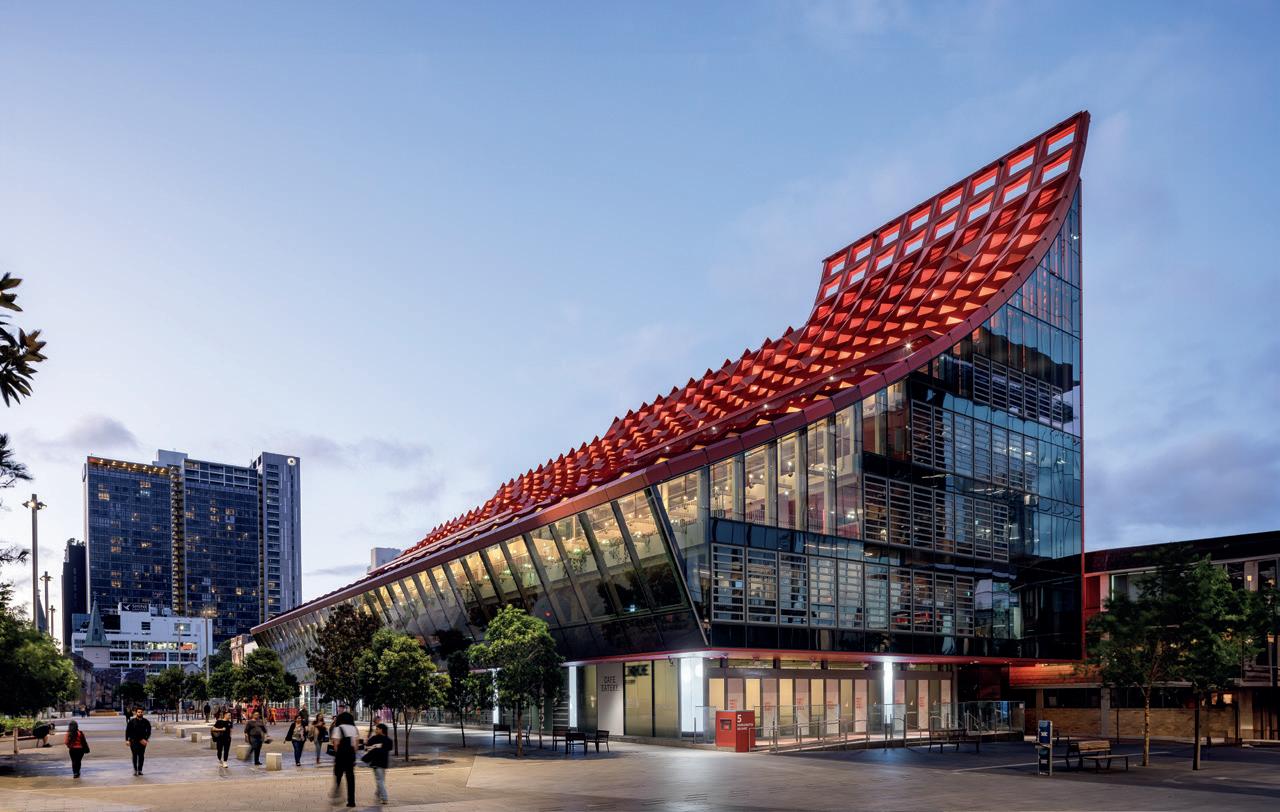
The future of the construction industry is approaching at lightning speed.
At InfraBuild we are leading the charge with SENSE 600® our new innovative reinforcing bar product that brings you lower Scope 3 emissions without reinventing your processes. Together we can build a brighter construction industry without compromise and light the way to a more sustainable future – a future where the sustainable choice is the obvious choice. It just makes SENSE

Up to 40% reduction in embodied carbon steel when used in place of our equivalent load capacity 500 MPa product.

Reimagined rib pattern maintains bar length, improves buckling performance and tensile capacity, using up to 16.7% less raw material.

Independently certified as meeting the requirements of GECA’s Steel & Steel Products (SSPv1.0i-2019) lifecycle ecolabel standard. www.infrabuildsensesolutions.com

With the trade sector facing a skilled worker shortage across a range of industries, the New South Wales Trade Pathways program is looking to boost the number of qualified tradespeople in the state, and is specifically designed to attract and support partially skilled workers, mature workers and women.
The Trade Pathways program is an initiative by the New South Wales Government, and is providing people in the trade sector with the opportunity to acquire qualifications in their fields at no cost, in order to fill skill shortages.
Infrastructure Magazine had the opportunity to speak with Gabrielle Durney, Structural Drafter at Northrop Consulting Engineers and NSW TAFE Trainee of the Year, regarding her career, the Trade pathways program and the issues currently facing those trying to advance in the trade sector.
Ms Durney initially began working in the retail industry and said that while she enjoyed her time there and had the opportunity to undertake many different roles, she felt as if her development was stagnating.
“I wanted to try something I hadn’t done before and give myself a new challenge,” Ms Durney said.
“To begin researching a potential career change I used the National Skills Commission skills priority list, which identifies all the jobs that don’t have enough skilled workers. I felt that these
roles had good job security and would be easier to get a foot in the door.
“Drafting really spoke to me as an emerging skill in a developed industry, I felt like I could be on the forefront of a new wave of technology. The role itself involved good communication skills, creativity and the ability to work independently.”
Ms Durney explained that because the role is identified on the skills list, the TAFE course was heavily discounted to encourage applicants.
“I started with the Certificate IV in Engineering Drafting, and within six months I had secured a traineeship
to complete the Diploma in Civil Construction Design with Northrop Consulting Engineers. Now that I am in the role, I really enjoy the flexibility, the ongoing learning and the drafting itself I find enjoyable to do.”
Ms Durney explained that it was very difficult to get a start as a mature aged apprentice (MAA), which is defined as an applicant over the age of 25.
“As an MAA, businesses have to follow a different award pay grade, which makes mature applicants twice as expensive as young applicants. Instead of just applying to every available position, I focused on applying to medium to large businesses who wouldn’t be as put off by the pay difference.
“The argument from small businesses tends to be that they can’t afford to pay someone a similar rate to a skilled worker when they don’t have any experience for the role. I would argue that skilled workers have significant and valuable experience they can bring.
“Skills such as time management, organisation, communication and personal leadership are also usually developed in an apprenticeship or traineeship, and mature applicants will already have these ready to go.
“They only need to be trained in the specific task of their role which is a much smaller ask. There are a lot of benefits for businesses willing to expand their applicant pool and consider people they wouldn’t usually for a role.”
At the New South Wales TAFE Excellence Awards in 2023, Ms Durney was recognised as Trainee of the Year, which she said was an unbelievable feeling.
“I put a considerable amount of effort into my qualification, I made personal sacrifices and really pushed myself outside my comfort zone.
“To be recognised at the end of it was such a great feeling. It not only felt like a recognition of my work but also the support I received from my network of friends, my family and Northrop Consulting Engineers, especially my manager and mentor Hayden Davis and my fellow trainee Ashbea Suyo.
“It was also fantastic to have that recognition for all the teachers from the program who supported and encouraged not only me but all the students, often working one on one with people to
ensure they were successfully absorbing all the material for the course.
“I was really taken by their care and effort; every teacher went above and beyond. The award wasn’t just for me, it was also a light shone on Ray Pozzato who nominated me and Dr Amro Ezzeldin the head teacher for Civil Construction.”
Ms Durney explained that the Trade Pathways program is designed to support people who already work in an industry, to recognise experience and shorten the process for receiving a trade qualification.
“Sometimes people work in roles where there are qualifications available and don’t go through the formal training process to receive that qualification, such as an office manager who hasn’t completed a traineeship in Office Administration.
“Sometimes, when people try and change companies, the experience in their old role is not recognised towards their ability to do the new role. Having the qualification that certifies you to be able to perform in the role strengthens your application and can translate into your remuneration. This pathway could also be an easier way to work towards a trade qualification without needing to apply for roles as a mature applicant.
“I think more women than men are working in roles without having formal qualifications; I know from working in retail there are plenty of women who could have a Certificate or Diploma in retail operations or a qualification in commercial bakery who have never been given the opportunity to complete a traineeship by their employer. It would be great to see their experience become formally recognised.”
Ms Durney is also a mentor for the Property Council of Australia’s Girl’s in Property program, and said that statistically young women will generally not apply for roles if they haven’t seen a woman working in that field before.
“Being a visible role model is one of the easiest ways to encourage more women into your field.
“I am lucky in that Drafting and BIM disciplines report a close to 50/50 gender split, with Northrop Sydney reporting slightly more women than men in these roles. Young women have
often not considered there are roles within the construction industry that are not male dominated.
“It’s so important to give girls all their options for their careers. I think schools get so caught up in encouraging young people to apply for university in order to improve their own ranking that they lose sight of communicating all the career options there are.
“Every conversation I have with young women highlights the entrenched belief that attending university will make you successful and that TAFE and trade schools are for high school dropouts.
“The girls I spoke to at the most recent event I attended said their parents would be horrified if they suggested attending TAFE instead of university.”
Ms Durney said that despite this common outlook, data shows that people who complete trade apprenticeships and traineeships actually not only turn out wealthier than university graduates on average, but they also report better mental health, with less depression, anxiety and loneliness than university graduates.
“I always point out to young women that by choosing a trade, they will have an employer cover the total cost of their training, graduate with no HECS debt and be paid and get experience in their role for the duration of their learning.
“Also, choosing TAFE does not close the door on university, it’s not one or the other. I completed a Certificate IV, then a Diploma, and now I’m studying a Bachelors in Construction Project Management at UTS while still working in my trade.”
Ms Durney said that from the perspective of the industry there is also huge benefit in encouraging women into construction.
“It seems shortsighted to not encourage more women to transition to construction roles when we’re faced with such dramatic skills shortages.
“Construction teams with women working in them also report less workplace conflict and work more efficiently. From the perspective of project management, female-led teams are more likely to finish projects under budget and within deadlines compared to male-led teams.
“Having a better saturation of women in construction could revolutionise the industry.”
The Dungog Wastewater Treatment Plant in the Hunter Region of New South Wales has recently undergone a $28 million upgrade, providing local residents with a modernised plant. Keeping the plant operational during the upgrade was a unique challenge that required an innovative solution.
The Dungog Wastewater Treatment Plant was first commissioned in 1938, and acquired by Hunter Water from Dungog Shire Council in 2008. This plant services a township of just over 2,000 residents north of Newcastle and is located in the middle of dairy and timber country.
It was recently determined that upgrades were required to replace the plant's aging infrastructure, but Hunter Water determined that the plant needed to remain operational during the upgrade process.
Critical to the ongoing operation of the plant was the supply of two selfbunded chemical tanks with a dosing system. These tanks, supplied by Polymaster, played a critical role in ensuring wastewater continued to be treated during the build.
According to Hunter Water Managing Director Darren Cleary, the major upgrade has provided the community with improved water quality, while also helping to deliver better environmental outcomes.
a complete solution they could connect and turn on without building unnecessary infrastructure around it, which ultimately would need to be torn down in the new build.
With any new build, there are complexities that need to be thought through. This particular design team had an added challenge of 'shoe-horning’ a new plant on the same site as the existing plant, which had to remain operational at all times.
As sodium hydroxide is suitable for Polymaster’s polyethylene tanks, it was a perfect solution.
The designers provided Polymaster with a detailed piping and instrumentation diagram for the dosing system to ensure they received a system that ideally suited their application. Polymaster’s self-bunded tanks comply with AS3780 (bund capacity of 110 per cent), so the installation crew did not require the expensive and unnecessary construction of a concrete bund. Ultimately, the end solution Polymaster provided was a costeffective and efficient one – saving both time and money. In addition, the installers were able to connect the turnkey system with minimal on-site works, enabling the plant to operate continually.

The project brief was to build a temporary plant off to the side of the existing plant while the client demolished the old plant and built a modern facility without disrupting the treatment plant.
One critical component was the dosing of sodium hydroxide into the wastewater. The build team required
Polymaster provided two 30kL selfbunded chemical tanks with a dosing system to help dose sodium hydroxide into the wastewater. A fully integrated dosing system was housed within each cabinet of the 30kL self-bunded tanks.
The Dungog plant is now complete, and Polymaster is pleased to have played a small but crucial part in keeping the operation humming along during the build.
The plant is a showpiece of modern technology and innovative design.
Dungog Wastewater Treatment Plant
Polymaster scope of work
» Product design
» Product manufacture
» Engineering
» Delivery
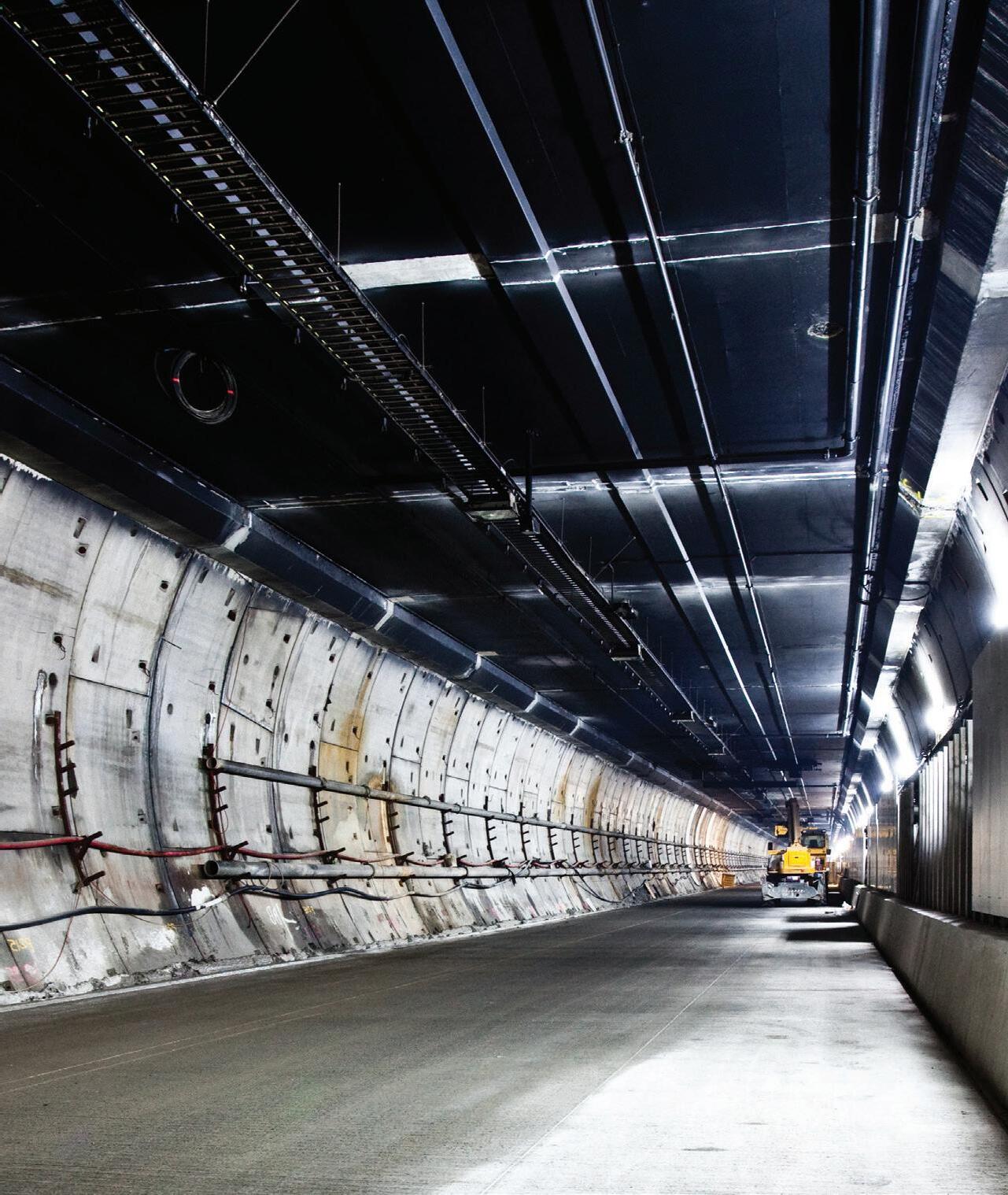
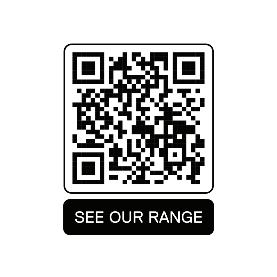
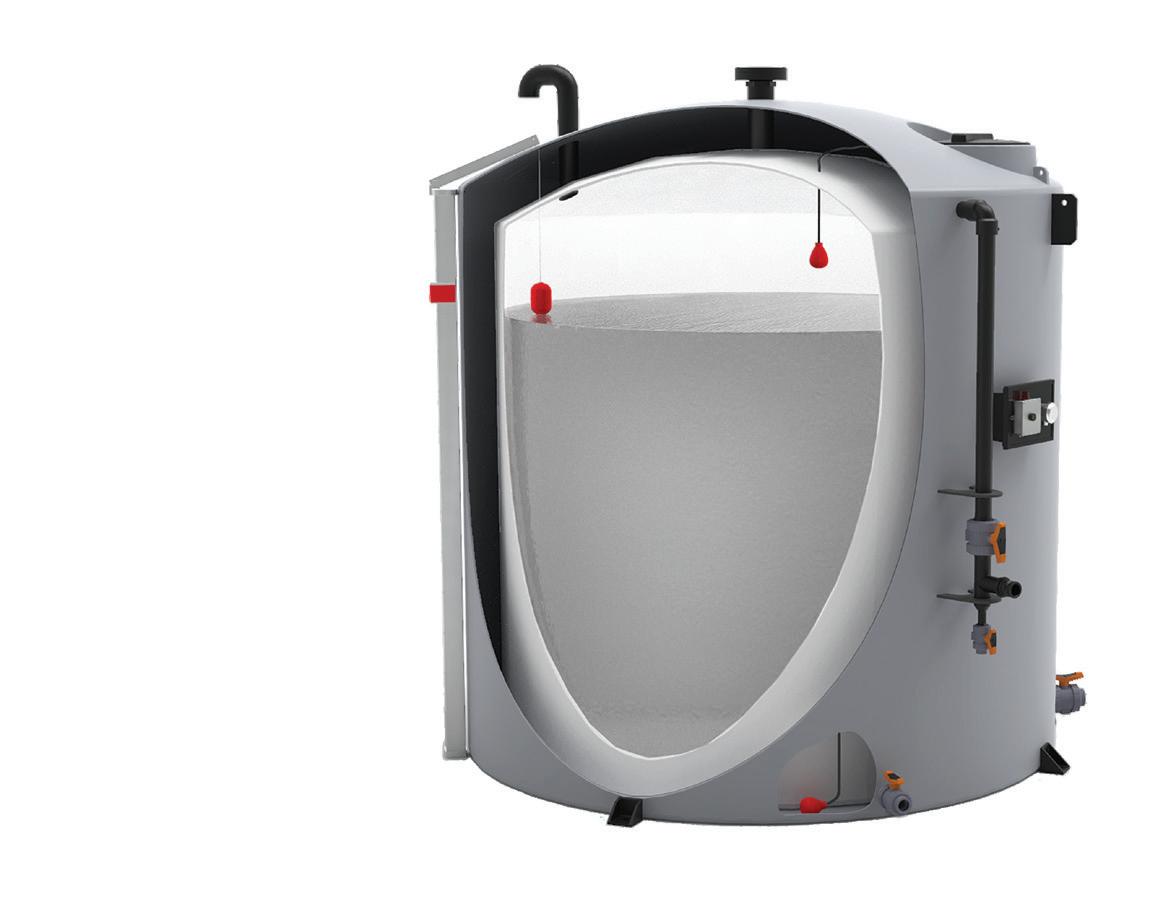

Converting an iconic theatre into a 16-storey five star hotel is no simple feat, particularly during Melbourne's COVID lockdowns of 2020-22. But the result is a hotel that features mid-century inspired interiors, an iconic art deco façade and subtle nods to its halcyon heritage.
The new Le Meridien five-star Marriott hotel is situated in the heart of Melbourne’s CBD on busy Bourke Street, surrounded by narrow laneways and just 60 metres from Parliament house.
A project of this magnitude, located in a heritage precinct, flagged significant challenges – so much so that some of the largest builders
in the industry turned their backs on the project.
However, it was a challenge that L.U. Simon Builders relished. As pioneers in the industry, the firm wanted to be part of the continual transformation of Melbourne.
“We developed a build methodology that satisfied the City of Melbourne sufficiently to let us demolish the former Palace Theatre,” L.U. Simon Senior Project Manager, Dennis L. Moschoyiannis said.
“It helped that we had 60 years of local knowledge to convince stakeholders that the job could be completed
successfully, and that it would be done with minimal disruption to the adjacent Princess Theatre and public transport network.
“To dig 12 metres underground required specific rigs, equipment and even a mining conveyor-belt to remove over 5,000 trucks worth of material through the CBD.”
Additional challenges included the fact that the original structure was a landlocked building, a heritage façade, public protection orders, neighbouring outdoor dining, one way traffic and the busy local tram network, not to mention over 120 protests at nearby Parliament House as well as impromptu city closures during construction.
“We would also like to acknowledge our key design consultants, Peddle Thorp, JBA, Northrop and Marriott Design,” Mr Moschoyiannis said.
“This job would not have been a success without a devoted team providing not only professional but also practical services from start to finish.”
The firm commenced construction in November 2020, between Melbourne’s
second and third lockdowns, and completed the build in October 2022, a year after the city’s sixth lockdown –handing over the project three weeks before its scheduled delivery.
After opening in March 2023, the venue has already become one of the city’s most popular hotel destinations.
L.U. Simon Builders has also received numerous accolades for the development, including being named Master Builder of the Year – the third time the firm has achieved this honour.
The project team also won the Australian Institute of Building’s National Building Professional of the Year award and was similarly honoured by the Victorian chapter – also for the third time.
“The Victorian building and construction sector continues to push ahead on a path of success,” Geoff Purcell, President, General Contracting Sector Committee for the Master Builders Association of Victoria said.
“The scope of work is tremendous and the outcomes for consumers continue to be spectacular.”

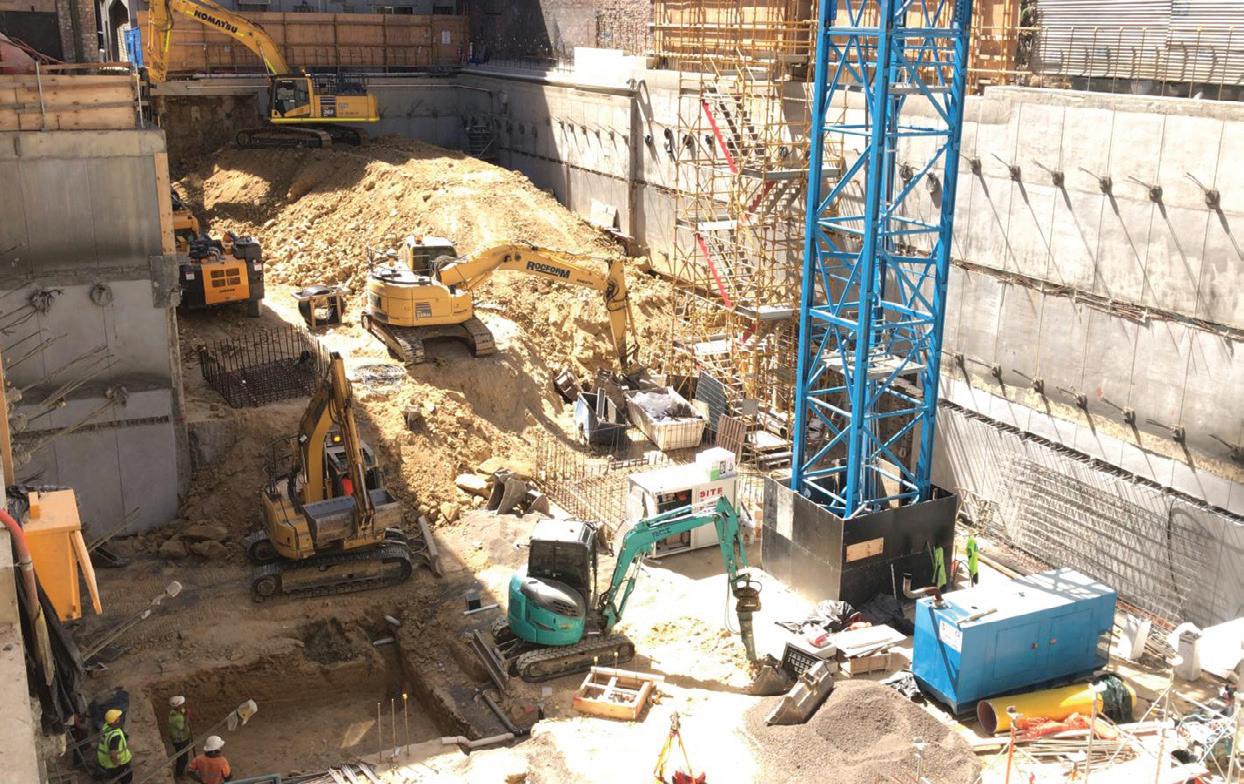
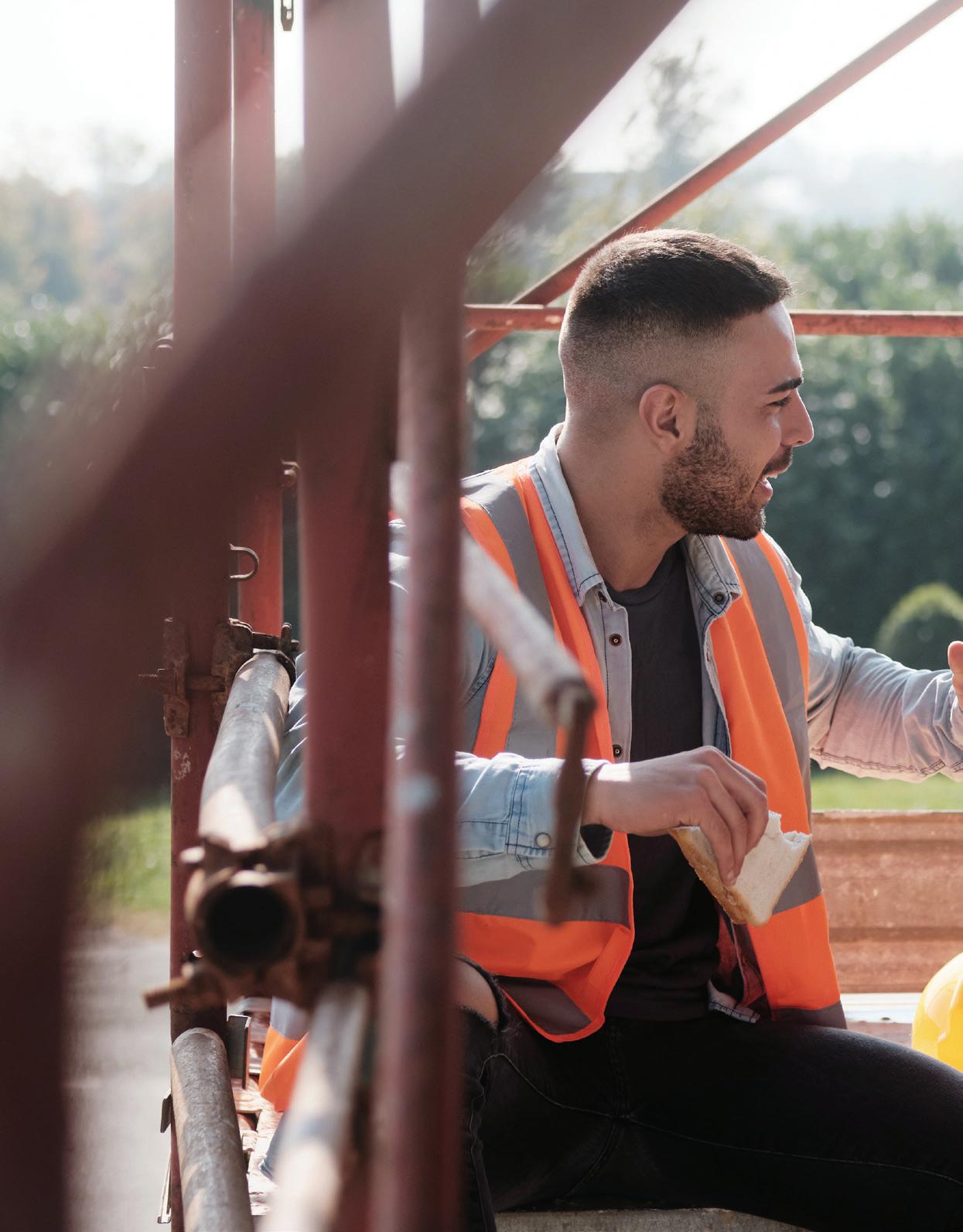

While the construction sector takes itself very seriously, this stoic approach hinders growth and creativity in the sector, with many workers reluctant to approach their leaders with new ideas for fear of challenging industry norms. According to a researcher from Bond University, the secret to overcoming challenges and driving innovation may lie in telling a good joke.
In its 2023 year in review, the Australian Construction Association (ACA) suggested that improving productivity is paramount to overcoming challenges in the sector, particularly finding ways to encourage and invest in innovative solutions.
The key to the sector’s growth in the years to come will hinge on whether developers and companies can adapt to changing demands and reforms to improve the industry’s culture, and that all starts on the construction site itself.
Dr. Ahmad Siddiquei, Assistant Professor of Management at Bond University Business School, has discovered through a research study that humour helps create a positive working environment on construction sites, known for being stressful and rigid.
Dr. Siddiquei said the study was motivated by the construction industry’s unique challenges, including continuous innovation amidst stringent deadlines, high risk of accidents, poor work-life balance, and environmental considerations.
“These pressures necessitate exploring new avenues to foster creativity and innovation among teams, making exploring leadership qualities, such as humour, vital for enhancing team dynamics and creative outputs,” Dr. Siddiquei said.
Maintaining a positive work environment fosters openness and honesty between workers and leaders and encourages cultural change within a sector. But in a tense industry such as construction, it can be challenging to approach leaders with new ideas or feedback without fearing consequences.
“This research delved into the nuanced relationship between the use of humour and its effects on fostering an environment conducive to creativity and innovation,” Dr. Siddiquei said.
“The research data was collected through a survey conducted in six organisations involved in large-scale construction projects in China. That survey data came from 165 team members nested within 45 teams.”
China’s construction industry is one of the largest in the world, with a value of USD 1 trillion and growing 5 per cent annually. As a fast-growing and significant sector, innovation is necessary for the industry to address challenges.
“China’s construction sector contributed 25.7 per cent to the country’s GDP in 2021 alone, so it’s a place where innovation is not just a buzzword, but a necessity to navigate the challenges of rapid urbanisation.”
Despite Australia’s construction industry seeming miniscule compared to China’s, both countries are facing rising costs, supply chain disruptions and increasing demand for investment in infrastructure development and housing. Notably, both Chinese and Australian project managers are looking to address issues to improve workplace culture on construction sites.
“Through statistical analysis, the study illuminated how humour positively influences psychological safety within teams, thereby encouraging a more open, trusting, and innovative workplace culture.”
While laughter may seem disruptive on construction sites, the study suggests it can positively enhance the team’s social-emotional environment, nurturing psychological safety. Cracking a joke can help project managers encourage workers to freely express their opinions, open up conversations, and convey complicated ideas easily.
This study explores explicitly benign violation theory: that is, humour only works when a joke can go against situational expectations and is simultaneously harmless. In line with this theory, the study suggests that a leader’s sense of humour will influence the acceptability of norm violations in teams, helping to alleviate tension, create a relaxed atmosphere and help foster creativity.
“Leader-initiated humour acts as a powerful catalyst for enhancing psychological safety within teams, creating a fertile ground for innovation and open communication,” Dr. Siddiquei said.
“Through the strategic use of humour, leaders can effectively lower barriers, mitigate tension, and foster an atmosphere where the sharing of novel ideas and the questioning of established norms are not just tolerated but encouraged. This approach signals to team members that divergent thinking and the expression of unique perspectives are valued assets, not liabilities.
“By cultivating an environment where individuals feel secure in taking risks and voicing their opinions without fear of retribution or ridicule, humour becomes a key instrument in driving a culture of creativity and continuous improvement.”
This study offers a new approach for construction companies to foster creativity on site, establishing connections between leaders and workers, and encouraging innovation to help the sector adapt and grow.
According to Dr. Siddiquei, there are three key take-aways from this study for project managers to learn from.
“Firstly, project managers are encouraged to leverage humour as a critical communication strategy, enhancing message appeal and fostering a creative atmosphere. This approach aids in effectively sharing project objectives, making interactions more engaging.
“Secondly, the selection process for project managers should consider individuals with a notable sense of humour, recognising their potential to inspire creativity and positively influence team dynamics. Initiating meetings with humorous exchanges can spark creativity and motivate team members to participate and share innovative ideas actively.

“Lastly, humour is identified as a vital tool for leaders to facilitate a psychologically safe environment in addressing the human resource challenges prevalent in construction. This atmosphere encourages open communication and the sharing of creative solutions, which are essential for tackling complex projects.
“Through strategic humour, managers can signal a supportive culture that values risk-taking and open dialogue.
“So, next time you are on a construction site, don’t forget to share a joke. It might just be the key to unlocking innovation and success.”
From here, Dr. Siddiquei plans to explore this study area further in a future project, mainly focusing on how humour can encourage creativity in different cultural settings.
“Our future research project will delve deeper into how a leader’s humour impacts team creativity over time, differentiate the effects of various humour styles, such as affiliative versus aggressive humour, and explore the study’s
applicability across different cultural settings. This expanded focus will enhance our understanding of humour’s nuanced role in leadership and its potential to foster innovative, highperforming teams in diverse environments.”
But not just the construction sector can learn from this study. Leaders in other sectors can leverage humour to transform workplaces to foster connections and drive innovations.
“Humour is a vital skill for anyone who wants to grab attention and convey profound or complicated ideas.
“The study highlights the critical role of psychological safety as a mediator in the humour-creativity link, suggesting a broader implication for leadership practices beyond the construction industry.
“Leaders across sectors can leverage humour to build a supportive and innovative culture, driving team and organisational success.”
Something as simple as making others laugh has the potential to change workplace culture and unlock creativity, supporting growth and innovation to meet future challenges head-on.
 Adam Mowlam,
Adam Mowlam,
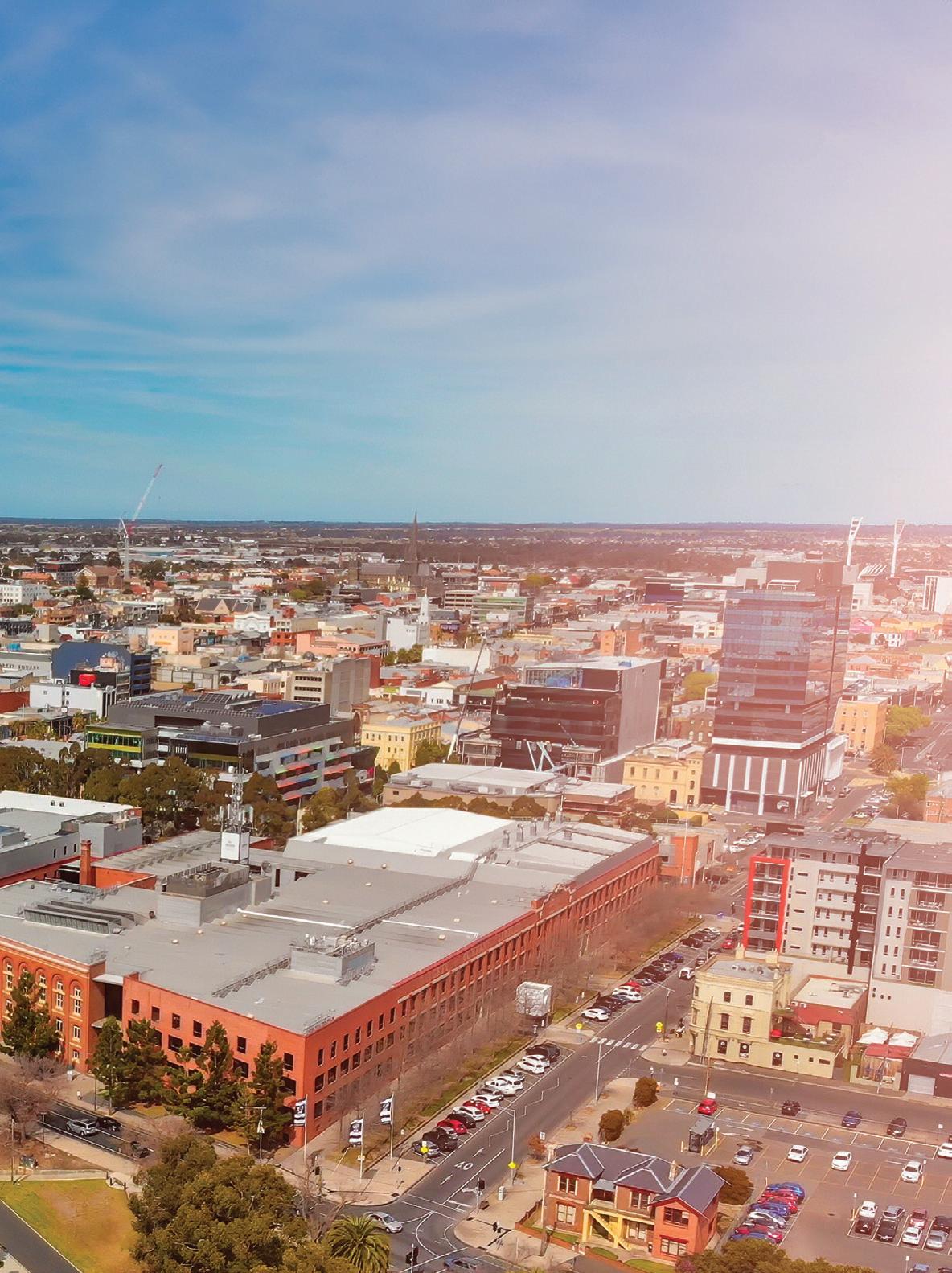
In the ever-evolving landscape of urban development, local governments are increasingly embracing innovative technologies to streamline their operations and enhance decision-making processes. One such technology gaining prominence is three-dimensional building models. Here, we take a closer look at the concept of building models, their varying levels of fidelity and their significance for local government professionals.

In the context of spatial digital twins, a building model is a highly detailed digital representation of a physical structure within a virtual environment. Designed with precision to accurately emulate real-world buildings, these models offer local government professionals an in-depth understanding of the urban landscape.
Building models display various levels of information, often referred to as Levels of Development (LOD). Typically, these levels range from LOD0 to LOD3, each indicating a unique level of intricacy and detail. The LODs can be categorised as follows:
LOD0: This level corresponds to a basic building footprint without attached height information or visible building parts. It is suitable for 2D cartography and analysis.
LOD1: This level includes height information, even allowing buildings to consist of several parts, each with a different height. The result may appear blocky, it strikes a good balance between visual appeal, data capture cost and performance. This mode is preferred for tasks like vehicle navigation and large area analysis.
LOD2: This level introduces roof shapes and detailed architectural elements of the building facade. LOD2 is suitable for 3D visualisation of larger city models and their surrounding context, although it's common to use LOD1 in suburban areas and LOD2 across activity centres.
LOD3: This level introduces into the building model detailed wall and roof structures, balconies, bays and projections. Generally considered cost prohibitive at large scale, it's common to mix buildings with LOD3 level information within a LOD2 dataset.
Understanding these different levels of fidelity allows local government professionals to choose the appropriate building model for their specific use case, balancing accuracy with resource requirements and considering the intended use of the digital twin.
While building models and 3D photomesh may appear similar initially, they serve distinct purposes within the digital twin domain. Typically, building models represent physical structures, crafted from geometric data. Conversely, 3D photomesh relies on aerial or satellite imagery to construct a textured, three-dimensional model of the terrain, encompassing both the built and natural environment.
The primary divergence lies in the depth of detail and accuracy. Building models excel in facilitating in-depth analysis and simulation, allowing local government professionals to

evaluate the impact of alterations on individual structures. On the contrary, 3D photomesh is better suited for visual representation and contextual understanding, providing a comprehensive view of the entire urban landscape without the intricate details inherent in building models.

The integration of building models into digital twins offer a range of benefits to local government professionals. Building models facilitate precise spatial analysis allowing the evaluation of proposed changes on individual structures and the broader urban environment. The building models are critical in comprehending how new developments or infrastructure projects might impact the existing landscape, extending to signal propagation and line of sight analysis for enhanced telecommunications planning.
Leveraging building models, local governments gain the ability to visualise and scrutinise zoning regulations, ensuring alignment with city planning standards (e.g. height controls, building setbacks).
Building models often play a pivotal role in emergency response planning due to the detailed information of the urban environment. This ranges from assessing the impact of natural disasters, identifying critical infrastructure locations, and evaluating the repercussions of emergencies on specific buildings.
Infrastructure development projects benefit from valuable insights such as simulating the integration of new structures, assessing their impact on existing infrastructure, and optimising layouts for maximum efficiency.
Building models also serve as compelling visual aids for proposed developments, facilitating effective communication with the public, enhancing transparency and community engagement. Residents can easily visualise and comprehend potential changes in their neighbourhood, fostering a sense of inclusivity in the planning process.
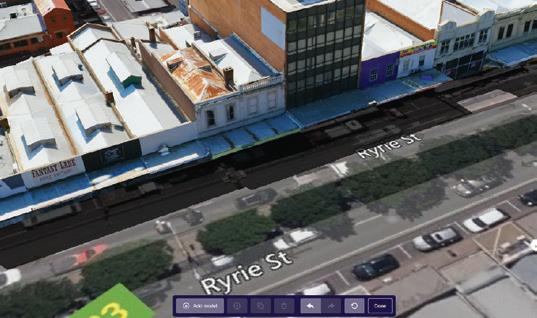
Local governments have access to a diverse array of 3D building products, encompassing both commercial and authoritative options.
Commercial Products
Google and Apple Maps: Highly used and robust platforms, both products rely on AI to generate building models that are combined with aerial/satellite imagery, street-level views and a range of other two dimensional data to offer a comprehensive perspective of the urban landscape. Outside of the CBD the building models are generally LOD1.
NearMap, OpenStreetMap and Here: Numerous commercial products employ high-resolution aerial imagery and AI capabilities, contributing to detailed and up-to-date building models. These products are more easily accessible within corporate GIS systems and often provided as a suite (trees, road infrastructure, swimming pools).
Geoscape Buildings: Geoscape is another authoritative product integrating AI technology, it delivers high-quality geospatial data, including detailed 3D building models, offering intricate information about building footprints, heights, and roof structures. The linkages between the dataset with Cadastre, Property, and Australia’s Geocoded National Address File (G-NAF) make it highly usable.
Authoritative
VicMap 3D Building: Recognised as an authoritative source, VicMap 3D Building, enriched with AI capabilities, stands as a pivotal building data repository for all Victorians. Developed by the Victorian Government, it ensures accurate and up-to-date information regarding building footprints, heights, and other pertinent details. The availability of these products varies across Australia.
The Geelong Smart City journey has always centred on the extensive use of data for informed decisionmaking. To advance this commitment, a crucial step
involves a comprehensive process of acquiring data and modelling buildings.
Data acquisition: capturing foundations for precision
City-scale high-fidelity building models hinge on the availability of 3D data products, typically taking two primary forms. Aerial imagery involves high-resolution photos, serving as foundational data for subsequent modelling and textures, while LiDAR scanning generates detailed 3D point clouds, providing precise elevation data required for building heights and rooflines. In the Geelong project, two pivotal datasets were employed. Firstly, a spatially accurate 3D photomesh was crafted from 7.5cm vertical and oblique imagery spanning a 180 square km area. Additionally, a georeferenced high-density LiDAR with a swath accuracy <5cm was utilised to ensure optimal feature extraction capability. These datasets underwent conversion to Cesium 3D Tiles and were aligned to GDA2020 with ellipsoidal height to enhance visualisation capabilities.
Building modelling: from footprints to digital realism
Historically, the building modelling phase would begin with building footprint extraction (LOD0) from aerial imagery using automated algorithms. This process helps to best determine scope and scale of the project area, in this case Vicmap 3D Buildings was used. Once completed, the data capture process saw the transformation and reprojection of the complete 3D tileset, migrating it from Cesium Ion to glTF files. This step enables access to all tile levels in Blender, the software used for 3D modelling/editing, facilitating the creation of high-quality LOD2 buildings. The facade detailing varies across buildings through the addition of facades and includes the removal of trees and cars, including from textures.
Integration and continuous evolution in digital twins
Following the creation of the building, models are integrated into the broader digital twin platforms such as Digital Twin Victoria. This is a key step as it involves aligning the created models with geospatial data layers (such as planning zones) to really capture the power of viewing the built environment in context of cartographic layers. The City's strategy involves providing access to this data for City staff, property developers/planners, investors, the community, and other essential stakeholders. The Geelong Data Exchange will serve as the platform for hosting this data. Given the substantial citywide investment of over $17 billion in capital projects, ensuring the currency of data is crucial. We are currently in the process of implementing a robust procedure to address this need.
Local governments can significantly enhance decisionmaking in urban development by investing in the development of building models. These models, when integrated into digital twins, offer urban professionals valuable insights for precise spatial analysis, refined urban planning, and strategic infrastructure development.
The Geelong case study exemplifies the benefits of building models in optimising zoning regulations, fostering public engagement effectively, and providing crucial support for the city's future growth and development. By harnessing the transformative power of building models, local governments ensure transparent, resilient, and community-centric decision-making, ultimately shaping cities to be more efficient, sustainable, and well-prepared for the future.

Techniques such as ground penetrating radar can be used to detect underground utilities up to five metres underground, but traditionally, analysis of this raw radar data requires technical expertise, extended wait times and is expensive to produce. Reveal, the innovative underground experts, have developed a new rapid point-cloud visualisation called Underdots that promises to speed up the data processing and deliver faster insights.
Underdots is an online data processing service that transforms multi-channel GPR data into a 3D pointcloud visualisation, providing designers with rapid insights into the intensity and depth of radar reflections, and helping to identify underground utilities in large areas.
The Underdots point-cloud visual is a collection of clustered dots plotted in a 3D GIS environment showing the intensity and depth of radar reflections. This creates an intuitive 3D model that gives designers clear indications of the presence or absence of unseen utilities.
In addition, utilities coordinators can compare the Underdots visualisation to existing utility plans to determine where further invasive investigations such as potholing should be conducted, as well ‘greenflagging’ regions where the Underdots detections match the expected findings.
and receive a unique link to a mapping environment that can be shared with all project stakeholders.
Reveal was contracted by Waka Kotahi, the New Zealand Transport Agency, to provide utility locating services and create a detections model of the underground utilities along major transport routes for the Let’s Get Wellington Moving project.
and historic tram tracks. After a full investigation, the Underdots process successfully identified 47,095sqm of reinforced concrete and 29,600m of buried tram tracks.

Underdots is a collection of clustered dots showing the intensity and depth of radar reflections.
These anomalies, if left undetected, would have resulted in major delays, as well as disruption to local businesses and commuters along the traffic routes. Project managers would have been required to take reactive action in resource management and rework construction plans, as the reinforced concrete requires specialist heavy machinery to break through. A similar process was required for removing sections of the remaining tram track rails. In this case, due to the early detection provided by Underdots, project designers were able to adjust plans accordingly before implementing invasive and publicly disruptive work.
Underdots supports data exports from popular multi-channel GPR systems including Kontur DX, Mala Mira and IDS Stream UP/X.
Clients upload data to the cloud service at https://www.underdots.com
The Underdots service was used to rapidly process data sets collected from Reveal’s own vehicle-mounted multichannel ground-penetrating radar (GPR).
The data collected from the city centre revealed a series of previously unknown detections such as reinforced concrete
Underdots is available now. Visit https://www.underdots.com today to learn more.



With Reveal, you can eliminate subsurface risks, deliver infrastructure projects faster and minimise cost blow-outs and variations.
If you need to understand your underground, get in touch with the world’s leading subsurface experts.
As groundbreaking vehicle and infrastructure technologies are deployed, and massive new data sources emerge, experts believe our traffic management systems will be revolutionised.

Leading transport experts have outlined a range of data sources and cutting-edge technologies that, if fully harnessed, can steer the nation towards the ambitious goals of reducing road fatalities by half by 2030 and ultimately attaining zero road deaths by 2050. These key insights from leading government and industry specialists are explored in a Progress Report from the collaborative research initiative ‘Integrated connected data for safer, more efficient traffic management operations’ from ITS Australia, in partnership with the University of Melbourne, Victorian Department of Transport & Planning, Transport for NSW, Transport & Main Roads QLD, Main Roads Western Australia, Transport Accident Commission, and iMOVE Australia.
“Following our successful Connectivity in C-ITS project, better understanding how data can improve safety and efficiency on our networks now was the crucial next investigation, and the insights from our stakeholder interviews and literature review have proven enlightening,” says lead researcher Professor Majid Sarvi from University of Melbourne.
“The wealth of data coming from different sources such as connected vehicles present an enormous opportunity to enhance how we manage transport networks, reducing congestion and emission, and enhancing safety for all modes of travel.”

ITS Australia’s progress report into how connected data can make for safer, more efficient traffic management operations.
The research focused on four key traffic management domains: intersection management; network and freeway optimisation; incident management, and micro-mobility enablement.
According to the evidence, current traffic management systems often react to problems, but advancements in machine learning, artificial intelligence, and access to automated data offer great potential for predictive capabilities.
An important step was to understand how data was currently being used in each domain with a focus on identifying current limitations that could be overcome through data enhancements.
In the area of intersection management, metrics such as queue length, delay, pedestrian trajectory prediction, public transport priority, and bicycle volumes are used for intersection optimisation. Better leveraging probe vehicle data is a significant opportunity in this area, with high-frequency and real-time GPS data to improve adaptive control strategies and enhance public transport priority schemes.
Data used for network and freeway optimisation focuses on estimating and predicting traffic volume, speed, and vehicle travel time with probe vehicle data emerging as a costeffective and flexible alternative to fixed installed road sensors. Nevertheless, challenges persist, including oversaturated traffic conditions, noise, and the accessibility of lane-specific information. Emerging solutions, such as high-resolution maps, may overcome these limitations.
In incident management, data such as video, crowdsourced information from social media, and vehicle speeds extracted from GPS data can be used to understand incident locations in real-time. However, reliance on supplementary data, such as historical incident records and crash risk factors remains. Video processing methods and machine learning analysis can identify incident locations and near-miss conflicts while artificial intelligence is increasingly being used for predictive crash modelling and real-time conflict prediction.
Micro-mobility enablement uses density and volume metrics to determine high-demand areas for corridors and parking locations; however, these methods are still emerging, and the review indicates a need for more research in this domain, especially for real-time application to adaptive control systems.
According to key leaders from industry and government consulted for the research, there are two big opportunities presented by new data and technology: greater efficiency in the transport network; and safety improvements that aim to drive down the number of road fatalities.
Experts highlight the transformative power of various data sources and technologies, ranging from vehicle probe data, camera-based video analytics, vehicle Bluetooth data, invehicle safety sensor data, and location app data.
Importantly, experts recognised the need to expand beyond conventional traffic modes like cars, trucks and buses, to incorporate information from micromobility, active transport, and pedestrians within our traffic management ecosystem.
Stakeholders point to a vast range of scenarios where integrated connected data could be harnessed more effectively including congestion performance measurement, heavy vehicle movement, improved coordinated corridors and speed compliance enforcement.
The opportunities stemming from integrated connected data are vast, spanning areas including congestion performance measurement, speed compliance enforcement, and the development of vehicle priority and pre-emption systems. However, along with the great possibilities, there are risks that must be addressed before we can fully harness the benefits of the data and technology.
Privacy and security management stood out as critical concerns amongst experts. While vehicle probe data is considered a game changer, stakeholders stressed the need to comprehend data aggregation, anonymisation methods, and the verification process before integrating new data streams into existing systems.
Furthermore, policy makers must address several crucial considerations including adapting traffic control systems to accommodate diverse data forms, scaling up complex algorithms, fostering data-sharing across agencies and jurisdictions, and navigating cost constraints.
“ITS Australia is proud to be supporting this research that brings traffic management into the digital age, using data and technology that can improve our traffic systems and save lives,” said ITS Australia CEO Susan Harris.
“As the stakeholders have identified in the study, it’s imperative that we put the effort in now to get the privacy settings right to ensure that the community’s reasonable expectations for privacy and security are built in at the outset.”
Moving forward, the project team will delve deeper into the analysis of connected vehicle data, specifically focusing on traffic efficiency at intersections. They will investigate a range of metrics including queue length information, midblock speeds, delay measurements, and stop-and-go traffic states.
The final report will be published in 2024.

Civil construction is about to receive new mandatory climate reporting obligations when it comes to carbon emissions. How are you going to go about estimating emissions in your tenders?
From 1 July 2024, Tier 1 companies will be legally obligated to report upon their climate-related risks and opportunities. Tier 2 and 3 companies will follow in subsequent years.
Given all of our users will be affected by these changes, it has been at the front of our minds when it comes to our estimating software.
Expert Estimation uses first principles to build up estimates from the basic building blocks of a project. From there, assign resources to your direct cost schedule items and add your overhead cost schedule items. Once you know how much it will cost you to complete, add your margin to produce a project total and submit your tender.
The new legislation means being able to estimate carbon emissions is a must. We’ve been in consultation with clients, particularly Tier 1, and have implemented a strategy to deal with this challenge.
Assigning carbon values to resources is one way of determining the quantity of emissions in a project, but it isn’t that simple. We are planning for the three different scopes of carbon emissions.
Scope 1 – Direct emissions
♦ From owned or controlled sources (i.e. fuel used by facilities and company vehicles)
Scope 2 – Indirect emissions
♦ From purchased electricity, steam, heating and cooling consumed by the company (i.e purchased electricity, heating and cooling at operating locations)
Scope 3 - Supply chain emissions
♦ All other indirect emissions in a company’s supply chain (i.e. goods and services, business travel and employee commuting)
Each resource will have an effective volume of carbon it contributes to the project across one or more scopes. By nominating those volumes against individual resources, Expert Estimation can summarise and calculate the total volume of carbon.
Each individual business is responsible for the values entered. However, there are a growing number of professional firms that generate these values on your behalf to use in your projects.
CAN RATES BE PULLED FROM A LINKED LIBRARY PROJECT?
The carbon values that each resource contributes could be included in a library and reused across multiple projects. Values may need to change for ‘per project’ reasons (such as geography, location, availability of resources, etc).
CAN THE RATE BE ALTERED?
Like any of the values in Expert Estimation, the value entered against a resource for a scope can be modified at any time.
WHAT ABOUT REPORTING?
There will be a range of reporting and analysis options available to interrogate the information, so you can categorise and summarise calculated carbon information as needed.
With 1 July 2024 not that far away, we are continuing to develop Expert Estimation so that managing carbon tracking becomes even more streamlined and efficient. We plan to ensure our users have the tools they need to meet their legislative obligations.
Contact us to discuss your organisation’s needs leading up to this change, so you’ll be ready.

Pronamics Expert Estimation delivers both power and flexibility to make tendering simpler. Use a range of approaches to create complex, transparent, reportable and repeatable estimates.
Navigate from the building blocks of your tender through to the final dollar figure, then produce transparent and customisable reports.
TEMPLATES AND FORMULAS
Save time by replicating existing projects and modifying for current tenders. Tried and tested formulas reduce risk of error.
MULTI-USER COLLABORATION
Work remotely as a team and share project data easily and safely, with configurable security and permissions.
MANAGE SUPPLIER QUOTES
Accurately compare supplier pricing for goods and services and get a true idea of the costs involved.
Start your 30-day free trial and find out how Expert Estimation can make your life easier.

As Australia’s critical infrastructure becomes more interconnected –relying on digital networks, Internet of Things systems and smart technology – developing effective and innovative means of keeping systems secure from cyber attacks has never been more important or more complicated.


The Australian Signals Directorate (ASD) responded to 143 cyber security incidents related to critical infrastructure in 2022-23, showing an increase of 95 incidents since the previous year and highlighting the need for cutting-edge security measures for Australia’s vital systems1.
The answer to this issue may lie in a breakthrough cybersecurity technology developed in a collaboration between a team of mathematics researchers from RMIT University’s Centre for Cyber Security Research and Innovation (CCSRI) and a tech startup called Tide Foundation.
Tide Foundation Co-Founder, Michael Loewy, said the partnership began when NTT Global, an international services provider, became aware of Tide’s early research.
“NTT is actually a major provider for RMIT and initially introduced us to the university in the context of a particular problem they were looking to solve, which is how do we grant students ownership of their identity and their credentials?
“Because you have this ecosystem where data needs to be ported between universities to employers. How do we do that in a way that's not creating just a massive cybersecurity or privacy liability and grants ownership in the way that it should?
“Our concept, a technology capable of locking things with keys that no one ever holds, was a new technology able to solve that problem in a new way.”
The joint study into the technology, which has been prepublished online by arXiv, was led by Dr Joanne Hall from RMIT’s School of Science.
Dr Hall said everyone needs to be thinking about what they can do to be more resilient against cyber crime.
“Maybe ten or 15 years ago, having access to large amounts of data was considered an asset,” she said.
“Now it’s considered a liability.”
In recent years, high-profile data breaches, cyberattacks and instances of unauthorised data access have eroded public trust and highlighted the vulnerabilities associated with the collection and storage of data.
Regulatory bodies worldwide have responded by implementing stringent data protection laws, such as the General Data Protection Regulation (GDPR) in Europe. In Australia, the Notifiable Data Breaches (NDB) scheme, which is governed by the Privacy Act 1988 (Cth), became effective in 2018.
“This means that holding all that data is a legal liability, not just a kind of reputation or consumer liability,” Dr Hall said.
Mr Loewy said the problem is that “every single platform, every solution, every system today has these central points of vulnerability. It might look slightly different in each system, but ranges from your IT team with godlike access to everything to particular aspects of your software stack or supply chain.”
Whether a business is using software from a vendor, or relying on their IT team, or keeping keys with access, there’s always someone who has access to that authority.
“And when that authority is compromised, it's game over,” Mr Loewy said.
“That's when you see the mass data breach. That's when you see these horrific breaches of infrastructure, and there will obviously be a lot worse to come.
“We want to remove these Achilles heels by removing the need for blind trust. And the way that you do that is by providing some verifiability, something you can verify is trustworthy and reliable.”
Tide’s new technology, dubbed ‘ineffable cryptography’, offers a solution by allowing data and devices to be locked with keys that no-one will ever hold.
It works by generating and operating keys, in secrecy, across a decentralised network of servers, each operated by independent organisations.
Each server in the network can only hold part of a key: no one can see the full keys, nor the entirety of the processes they are partially actioning, nor the assets they are unlocking. By spreading the process invisibly across the network, the keys that would-be hackers are seeking are never exposed.
Dr Hall said there’s a number of components that must work together in a secure system.
“You have mathematical primitives and then you have algorithms, then you have software, then you have hardware, then you have a business model, then you have a legislative framework. And we need all of these things to work in tandem.
“So my role has been very far down at the mathematical primitive.
“We are using a mathematical primitive that is very different to what is in use in current security frameworks. The algorithms and software that build on top of that are obviously quite different because, like I said, right down at its core it's completely different.”
Mr Loewy said that the primary principle of the technology is to remove all instances of all-access, ‘godlike’ authority from the system, even from administrators.
1 https://www.cyber.gov.au/about-us/reports-and-statistics/asd-cyber-threat-report-july-2022-june-2023

“There’s usually something inside of a system, a key, that is granting godlike authority to whatever’s locked inside of it. Our approach is to take the key out of the platform and render it unreachable. Ineffable.
“When required, the key will check, 'Am I allowed to do that? I'll unlock that for you, but I'm not going to hand you the key. I'm just going to give you what you need at that point in time'."
This technology doesn’t require organisations to rebuild their CRM system, ERP system or access control system.
“You take this new capability and integrate it into an existing product, providing you with the security that even if the platform is breached, the authority to that godlike access no longer lives there. It lives outside in a place no-one can access it.”
ADDRESSING THREATS TO CRITICAL INFRASTRUCTURE
Ineffable cryptography offers a new approach to cybersecurity for critical infrastructure, which can be especially vulnerable to hacking thanks to legacy systems and its interconnected nature.
“An organisation that manages infrastructure for not just themselves, but for all of their customers, they’re sitting on a huge liability,” Mr Loewy said.
“If they get breached, every single one of their customers are now at risk of compromise. And if those are important industrial facilities or big businesses, the impact of that breach is just enormous. No organisation wants to sit on that kind of liability; and every organisation wants to be able to provide a product or service in a way that demonstrates to their own customers, ‘We don't present a risk to you even if we get breached’.
“Even if you weren't working with legacy infrastructure and you had a completely new kit, best practices, the most highly trained employees, we're still talking about human beings. We're still talking about potentially facing an adversary with near unlimited resources."
Mr Loewy said it’s only a matter of time before that breach happens.
“If we still have these Achilles heels inside the system, it's only a matter of time before they're compromised. It's the current approach to cybersecurity that is failing us, not the individual mistake that is inevitable, which is why we're introducing a new approach.”
For example, in May 2021, a hacker group used a single compromised password belonging to an account no longer in use to attack the Colonial Pipeline in the US. The hackers accessed the major gas pipeline’s servers and demanded compensation, shutting down operations for five days and causing localised shortages of gasoline, diesel fuel and jet fuel.
Mr Loewy said the cyberattack was a notable event that exemplifies the vulnerabilities of critical infrastructure systems. By removing the “godlike authority” over these systems from anyone’s hands, Tide and RMIT have provided a technology that can prevent similar incidents.
Scientifically validating this technology has been a collaborative effort between RMIT’s own Chief Information Security Officer, top mathematicians and cybersecurity experts in the School of Science and CCSRI.
Most recently, a select group of cybersecurity students, supported by the RMIT Cloud Innovation Centre and RMIT’s AWS Cloud Supercomputing Hub (RACE), worked with industry partners to help them test the technology and prove its ability to solve critical infrastructure security challenges in ways that weren’t previously possible.
The Ineffable Cryptography has been incorporated into a prototype access control system specifically for critical infrastructure management, known as KeyleSSH, and successfully tested with multiple companies.
“Whether it's individual devices, whether it's access to a piece of infrastructure, a switch in a water facility or smart meter, we’re locking everything down with these keys that no one ever holds. Keys no-one can steal, lose, or misuse.
“Every time someone needs to do something, this control system now reaches out to the key and says, ‘hey key, it's me. Can you make a configuration change? Can you unlock this?’ Whatever the case may be.”
Notably, this technology is an Australia sovereign capability, underscoring the country’s capacity to transform the cybersecurity landscape.
“We don't know what the future holds, but we do know that the future holds cyber crime, and so we do need to be thinking about what is the next thing that we can do to be more resilient against cyber crime? And everybody needs to be thinking about that, and sometimes that means a shift in the way things are done,” Dr Hall said.
You can read the joint study here: https://arxiv.org/abs/2309.00915

Camera-as-a-Sensor technology is a groundbreaking development in the realm of industrial operations and safety. The technology represents a pivotal shift from traditional camera systems to a new era where cameras provide not just visual recordings but actionable insights. As a key component in modern industrial and infrastructure practices, CaaS technology has begun to redefine how visual data is used for intelligent decision-making, enhancing safety, and improving efficiency across various settings.
This technological evolution has been marked by integrating analytics and intelligence directly into camera systems. The fusion of high-quality imaging with cutting-edge artificial intelligence and machine learning algorithms allows CaaS to interpret visual data in ways previously unattainable. This has opened up new avenues for using visual information, turning raw data into meaningful insights that can be acted upon in real-time, thereby enhancing decision-making processes across diverse industrial landscapes.
The applications of CaaS technology are both diverse and impactful across various sectors.
In industrial settings, CaaS technology can play a crucial role in enhancing worker safety. It goes beyond traditional monitoring by employing intelligent detection of potential risks and ensuring stringent adherence to safety protocols. This proactive approach to safety reduces workplace accidents and enhances the overall well-being of employees. Its effectiveness was demonstrated during the COVID-19 pandemic for mask-wearing and temperature checks and is now deployed in sectors like mining and oil and gas for PPE compliance.
CaaS plays a crucial role in urban traffic management, analysing traffic patterns and detecting congestion, non-compliance, and dangerous situations in real-time. Additionally, it enables the generation of alerts and provides control centres with the necessary information to take prompt actions. This capability contributes to safer road conditions and more efficient traffic flow, effectively reducing bottlenecks and enhancing the commuting experience.
CaaS technology utilising thermal imaging can swiftly detect abnormal heat patterns, signalling potential fire hazards. This rapid identification enables prompt responses, crucial for preventing large-scale incidents. A key advantage of CaaS in fire detection is its ability to operate from a safe distance, unlike traditional sensors that need to be close to the heat source. This not only enhances safety by minimising risks but also reduces the need for extensive cabling and sensor installation.
Beyond these applications, CaaS technology can provide benefits to various aspects of infrastructure management and development.
INTEGRATING CAAS WITH EXISTING INDUSTRIAL TECHNOLOGIES
Reflecting a significant evolution from conventional CCTV systems, modern CaaS systems employ decentralised architectures. This innovation enables real-time, local processing of data, reducing latency and enhancing responsiveness for more effective decision-making. When integrated within existing industrial and operational environments, CaaS complements and enhances existing technological systems such as SCADA and IoT devices. This integration not only offers a comprehensive operational view but because data is processed locally, CaaS systems minimise the need to transmit sensitive information across networks, boosting cybersecurity and data integrity.
The adaptability of CaaS technology makes it an ideal solution for a broad range of industrial scenarios, paving the way for future advancements that could further enhance industrial practices and decision-making processes.
Consider the opportunities your organisation has to implement CaaS technologies to enhance safety, streamline processes, and safeguard your assets.
To learn more, download our CaaS eBook – Eyes Wide Open: Real-time Insights and Edge Decision-Making with Camera-as-a-Sensor at madison.tech/eyes-wide-open-camera-as-a-sensor

Learn how Camera-as-a-Sensor provides data insights beyond normal camera vision, enhancing safety, efficiency, and productivity.
Download the eBook now and drive continuous improvement across your organisation.



and protect

With a 30-year legacy of providing resilient industrial technology solutions, we’re familiar with many of the challenges the industrial sector faces as it embraces digital transformation. As an Industry 4.0 enablement partner, we use our expertise and global technology portfolio to design solutions that fasttrack digital transitions and offer lasting value to critical operational environments.



nbn® New Developments works with many of Australia's leading technology innovators, problem solvers and outcome makers through thousands of new property development projects right across Australia. The reach and experience of our team and collaborative network of experts provides a unique perspective on what it takes to deliver 'smart' outcomes of enduring value in communities and cities.
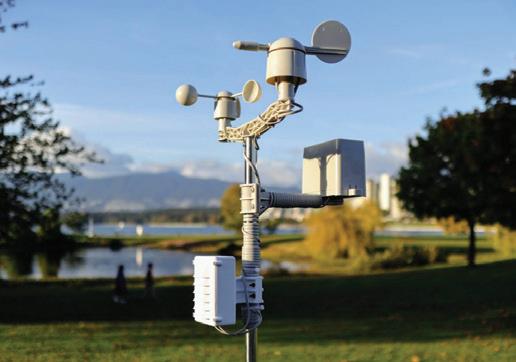
nbn New Developments have begun collaborating with some of the best technology solutions companies from around Australia through a partner program called nbn Smart Solutions. The program is designed to curate experienced, trusted technology industry partners; it conveys collaborators, the people, and the organisations nbn trusts to work on projects nationwide to help deliver smart technology solutions leveraging the power of nbn connectivity.
nbn’s program and its Smart Solutions partners can help deliver cutting-edge property development technology solutions with confidence – confidence in design, trust in execution, and confidence in the outcome.
The program's partnerships are forged by a mutual desire to transform urban landscapes into intelligent, sustainable ecosystems. Their strategic alliances align closely with nbn's core values and
vision – to lift the digital capability of Australia - by providing a solid platform to harness the nbn® networks' extensive capabilities. Through collaboration, nbn’s Smart Solutions Program partners can help deliver versatile, innovative urban proptech solutions that significantly elevate the value and functionality of both developments and cities, paving the way for smarter, more connected communities.
An example of an exciting new innovative approach is the SIMPaCT (smart irrigation management for parks and cool towns) project currently operational in Sydney Olympic Park. This initiative was designed with a clear objective: to combat urban heat and reduce water consumption.
nbn and SAPHI, an Australian techagnostic solution provider, achieved this by deploying 250 intelligent sensors across the park for critical data collation overlayed with two advanced artificial
intelligence algorithms, all backed by the robust infrastructure of the nbn network.
This intricate system works by optimising the existing irrigation network, which, in harmony with the greenspaces of Bicentennial Park, reduces the suburb's temperature by up to four degrees while achieving an impressive 15 per cent annual saving in water usage. It's a tangible demonstration of how smart technology can create a more liveable, sustainable urban environment. nbn's partnership with SAPHI has been instrumental in scaling these solutions.
nbn's Smart Solutions program can help provide new property developments with a platform to harness the best possible technology at an accessible cost, all backed by the reliability and redundancy of the nbn network.
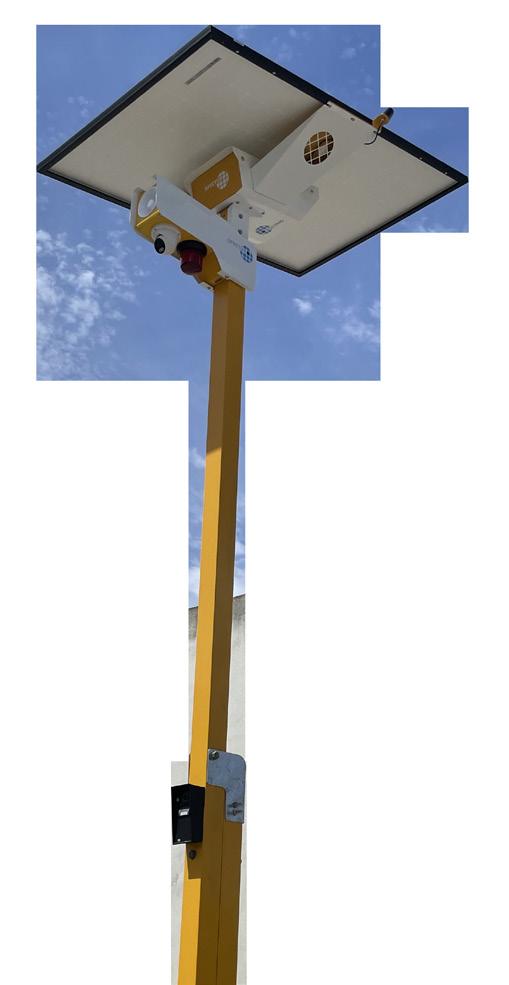
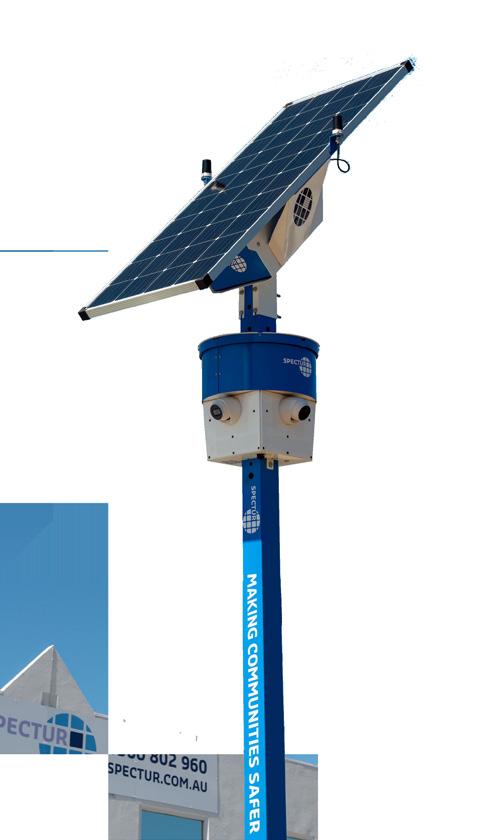



The Victorian Department of Energy, Environment and Climate Action (DEECA) and Tonkin + Taylor have come together for an innovative study of Victoria’s coastline, which will enable the proactive management of coastal cliffs now and into the future.
Coastal cliffs are dynamic by nature, constantly eroding due to natural processes such as wind and wave action, drainage and overland flow and chemical weathering.
The distinctive features of the Victorian coastline are created by the complex interaction between the various geological units and coastal processes to create landforms that support a diversity of cultural, environmental, social and economic values.
However, accelerated climate change, including the consequent rise in sea levels, poses a significant risk to coastal cliffs and their associated ecosystems and infrastructure. Proactive risk management is therefore essential to ensure these natural and man-made coastal assets can be enjoyed by future generations.
After a competitive tendering process, Tonkin + Taylor was selected by DEECA to undertake a study of coastal cliffs along the entire Victorian coastline. The purpose of the study was to provide an understanding of coastal risks at a regional level, to support local
land managers in undertaking their role, and to identify areas requiring detailed local assessments. Tonkin + Taylor was well positioned to deliver this complex package of work at the scale required, having a skilled team of coastal engineers and engineering geologists with a proven track record of similar studies.
The work involved assessing the various geological units and coastal processes to determine cliff areas susceptible to inundation and erosion, as well as talus runout, in the even that instability occurred.
Melbourne-based Tonkin + Taylor Associate Engineering Geologist Wendy Greatbatch helped lead the cliff instability assessment work. “Projects like this, where you are dealing with a wide range of geologies and considering the effects on a regional scale, are very rare, and make for a very exciting project,” said Ms Greatbatch.
With an understanding of the Victorian geological units and their weathering behaviour, Ms Greatbatch was able to divide the coastline into component areas which could be expected to have
a similar response to coastal processes. This was validated through a series of “ground-truthing” site visits to ensure assumptions made during the desk study were accurate.
The study included complex GIS analysis of historic and recent aerial imagery, augmented by aerial reconnaissance of the entire coastline. Reconnaissance by a small fixed-wing aircraft provided additional detail on coastal processes, allowed further validation of the assessment approach, and provided DEECA with a repository of thousands of up-to-date high-resolution images at a scale not previously available.
By combining disparate information from multiple sources, Tonkin + Taylor assessed past, present and future erosion rates under different sea-level change scenarios. The information was then used to inform a “second-pass” risk assessment focussed on public assets and safety.
The work carried out by Tonkin + Taylor provides a valuable building block on which future detailed studies at a local scale can be undertaken, as well as providing a record of the current coastal cliff conditions at a scale not previously available. The work is intended to help land managers engage with their local community and to proactively manage their unique coastal assets.

As a specialist provider of engineering and environmental services, Tonkin + Taylor brings your project ambitions to life.
With proven experience on large-scale projects across Australia and New Zealand, we are the specialist partner of choice.



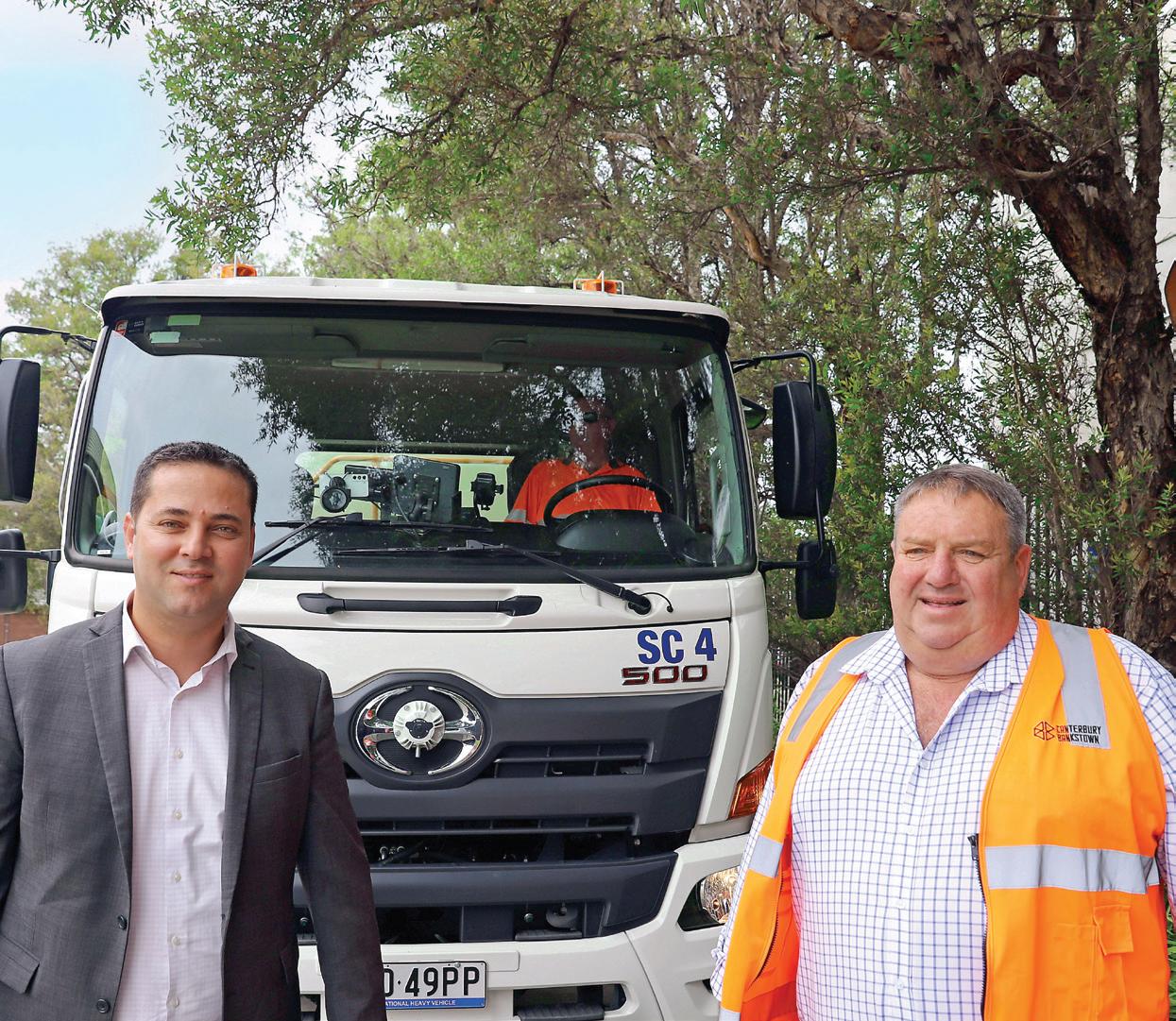 By Kody Cook, Journalist, Infrastructure Magazine
By Kody Cook, Journalist, Infrastructure Magazine
With maintenance costs at record highs across the country, the use of AI is increasing the efficiency of local road upkeep, by predicting where and when works will be needed ahead of time. Here, we look at how the City of Canterbury Bankstown is using new technology to improve its road maintenance services.
The City of Canterbury Bankstown has undergone a trial of a program called Asset AI, in partnership with Transport for NSW and the Institute of Public Works Engineering Australasia (IPWEA), which can highlight – and will eventually predict – road safety issues like damaged signage, faded line markings, potholes and rutting, and can prioritise them for council maintenance workers based on severity and safety risk.
The program is designed to improve over time and is expected to eventually be capable of drawing on weather data to predict potholes and cracks before they even begin to form, and long before they become dangerous and costly to repair.
Asset AI is being supported by the New South Wales Government, as preventative road maintenance is expected to majorly reduce the costs for councils by reducing their reliance on time-consuming road audits and increasing the life-span of roads through timely repairs.
Asset AI received $2.9 million through the State Government’s Smart Places Acceleration Program, a special reservation under the Digital Restart Fund, which was established in 2020 to support partnerships between the New South Wales Government and councils for the development of innovative projects.
In an interview with Infrastructure Magazine, the City of Canterbury Bankstown Mayor, Bilal El-Hayek, said that Canterbury Bankstown is a leader in using new technology to improve the way it provides community services.
“That’s why we put our hands up to host this trial,” Mayor El-Hayek said.
“This is a fantastic opportunity to see if artificial intelligence (AI) can better manage the conditions of our roads.
“Early results of the trial have shown us that AI can successfully detect many different types of defects within our roads including potholes, pavement cracking, faded line marking, damaged signs and even graffiti.
“The trial is still in the early stages, but we are hoping the technology will better inform our program of works so we can manage the conditions of our road network more effectively.
“It’s helping us identify faults in the road before they become a bigger issue. Getting onto issues proactively and improving our ability to fix them.”
The primary benefit of using Asset AI to assess the condition of local roads is its ability to enable more effective preemptive maintenance.
It is always more expensive to undertake repairs once serious damage or failure has occurred, so by detecting faults before they become severe, the AI is working to improve road safety and prevent traffic accidents, reduce infrastructure maintenance costs, reduce work time and thereby increase traffic efficiency, and extend the lifetime of roads.
In order to make the accurate predictions necessary for preemptive maintenance, the program needs to regularly be supplied with data on the state of the road network, local traffic conditions, and even weather patterns.
To help with this, Mayor El-Hayek said that the technology is installed on the region’s street sweepers which are constantly out and about keeping roads clean.
“The program analyses each section of the road that the street sweepers drive down, giving us much more data and information on the condition of our roads.”
Where councils typically only undertake road audits once every three to five years due to their cost and length, when used this way Asset AI has the potential to provide data on the condition of the area’s local road network as often as every fortnight at a much lower cost.
In early September 2023, the Grattan Institute revealed research which found that federal funding to local governments was failing to keep up with the increasing costs of construction and maintenance.
The research showed that over the past 20 years federal Financial Assistance Grants failed to keep pace with the rising costs of constructing and maintaining roads.
It also found that regional, rural and remote councils faced additional and sometimes insurmountable difficulties, due to smaller ratepayer bases, larger geographical areas, and less staff.
Councils collectively manage around 75 per cent of Australia’s road network by length, while collecting less than four per cent of national taxation.
In the face of these challenges Asset AI has the potential to cut costs for councils by increasing the efficiency of roadworks, helping to ensure that local governments can afford to maintain their road networks with money to spare for other critical community services.
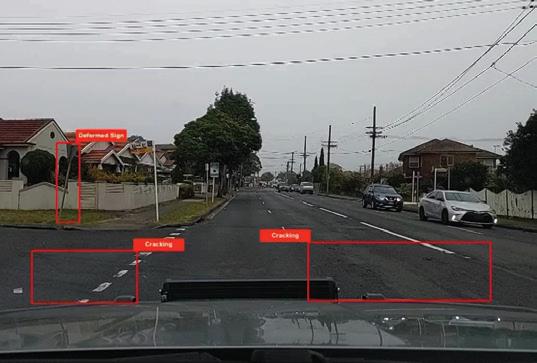
Canterbury Bankstown conducted a pre-trial of the technology in 2021, which has since enabled initial camera and sensor trials to be undertaken across the Greater Sydney region.
In mid-2022, a trial was undertaken across the city in which 32 public transport buses were outfitted with cameras and sensors to collect data on the state of the city’s road network to inform the program’s machine learning.
By mounting sensor equipment onto vehicles with regular routes, like garbage trucks, public transport buses and street sweepers, councils can make good use of resources that are already on their roads and defects can be detected passively, including those un-reported by residents.
An additional trial was undertaken outside the city in which a ute was mounted with the road-scanning equipment and used to scout 100km of regional roads to create a report on rural road conditions and to diversify the AI’s dataset.
Mayor El-Hayek said that council is planning to continue using the program into the future and working on ways to best utilise the technology to benefit its maintenance programs.
“We are going to continue to develop the project and have ambitions to expand it.
“There are potential benefits in looking at ways of using machine learning with AI technology to predict where road defects are going to occur before they appear.
“This would allow us to undertake much more targeted and effective road maintenance.
“Partnering with Transport for NSW and IPWEA in this trial has been very successful. Each organisation has brought their own unique skills and experience, which has helped us achieve great outcomes.
“We are proud to be the council leading this technology for the state of New South Wales.”

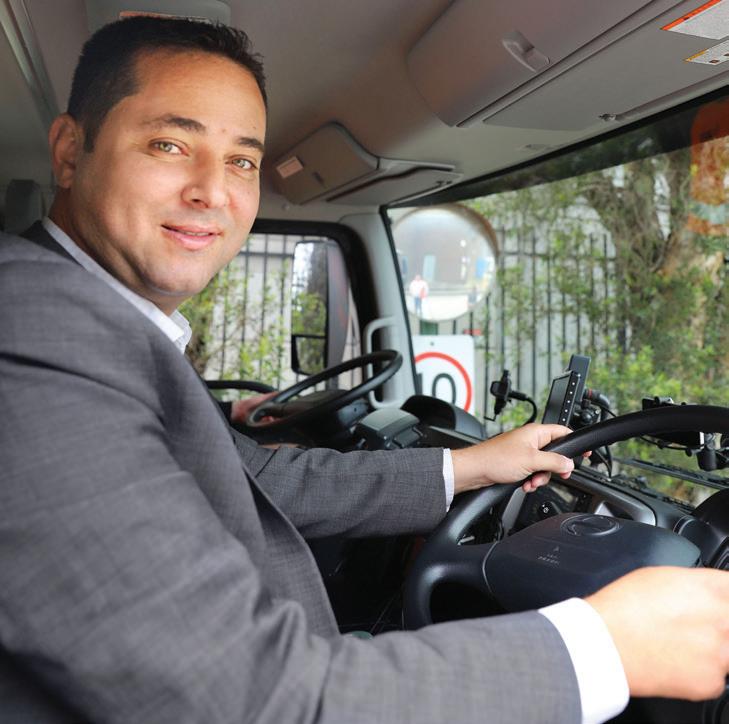
Toshiba’s SCiBTM technology is a transformative force in the battery market. Compared to a conventional lithium battery, an SCiBTM cell utilises a lithium titanium oxide (LTO) in its anode. This chemistry ensures that if SCiBTM cells are pierced or damaged, the anode material transitions from a conductive phase to a high resistance phase. This is key to limiting the flow of energy and preventing any chance of thermal runaway and subsequent combustion.
Essentially, they’re self-protecting, which is a gamechanging development.
Utilising an LTO anode also means no possibility of lithium deposition or membrane-puncturing dendrite growth, meaning they’re far safer over time.
It’s a technology that’s proven to be exceedingly robust, and safer, over the years. Toshiba have been manufacturing SCiBTM since 2010, with zero cell recalls or CPL (Contractual/Product Liability) accidents – a claim that conventional lithium batteries can’t make.
Optimising the total lifespan and cost of ownership for battery technology are also crucial factors in the decarbonisation process – another area where SCiBTM technology excels.
Compared to conventional lithium batteries, SCiBTM cells have a typical lifespan of over 20,000 cycles. Even after the 20,000 cycle point they still retain 80 per cent of the original capacity. So, after reaching the end of the first application, they can receive a second life where weight isn’t a factor, such as stationary solar support, creating a provable asset long into the future.
The increasing uptake of battery technology has been a critical step in supporting traditionally emissions-heavy industries to decarbonise their operations. But conventional lithium batteries won’t be the driving technology for the future.
The technology’s most exciting development is its rapid charging capabilities. With a high C-rate, charge times are measured in minutes, not hours, and an entire system can be charged to 80 per cent capacity in just six minutes, and fully charged in ten minutes.
This is key for easy adoption. If a vehicle requires multi-hour charging times, workers must carefully plan their usage to ensure availability. But if their vehicle rapidly charges in the time of a coffee break, this downtime disappears.
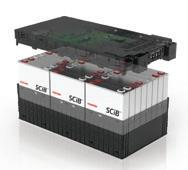
BATTERY TECHNOLOGY THAT’S DESIGNED FOR THE FUTURE
With exceptional safety, improved lifespan, and rapid charging, SCiBTM technology has the capability to be the cornerstone of a business’ decarbonisation plan. And the Australian mining industry has started to take notice, with SCiBTM systems already deployed in underground electric vehicles.
Consider the flow-on effects, as well. It’s not just fleet electrification; faster charging enables a smaller fleet, fewer charging stations, and more efficient use of the vehicles on hand. It allows businesses to improve safety on site, while vastly reducing capital costs at the same time.
Does this signal the end for conventional lithium batteries? Not yet. As decarbonisation efforts ramp up across industry, we will still see them used in low-challenge applications where low charge rates or lower lifetime is required.
But for operations that require rapid charging, uncompromising safety, and extreme longevity, SCiBTM technology will lead the way.

Public infrastructure and assets such as roads, water supply systems and wastewater treatment are essential services, which is why asset monitoring is such an important domain within the infrastructure industry. Advancements in technology have led to modernised asset monitoring systems and innovative strategies to manage assets, from intelligent traffic monitoring to remote operating vehicles. Here, we take a look at some of the latest technologies that are improving infrastructure asset management around the country.
In addition to the benefits for communities, asset monitoring can save time and money as well as improve worker safety, so it is a great business practice all-round.
The latest technologies when it comes to asset management not only save time and money, but they are often able to remedy key challenges and transform asset management strategies from a reactive to a proactive approach.
Intelligent asset monitoring is successfully being used more and more because of the benefits it provides to communities who access public infrastructure and the companies and councils who maintain that infrastructure.
In 2022, intelligent traffic monitoring systems such as Bluetooth sensors and cameras were installed on some of Canberra’s main roads to manage the traffic network during the Raising London Circuit road project, which majorly impacted traffic conditions in the state.
Around 40 Bluetooth sensors and 30 new cameras were installed to allow real time monitoring of the traffic to be able to provide live updates to motorists and public transport users.
The investment in smart technology means that motorists are able to be notified of delays and disruptions during the construction period, with live signage conveying the best route to take around the city.
The improved surveillance also enables a faster response to road events such as accidents or congestion.
The Raising London Circuit project is still in progress and the smart technology continues to enable the ACT Government to monitor traffic and provide motorists with live updates, which will allow continued asset monitoring in the future, and will benefit motorists long after construction is complete.
The Central Coast Council in New South Wales engaged robot technology as an innovative solution to maintain its water supply system and keep its workers safe.
The Mangrove Creek Dam, which provides approximately 98 per cent of the region’s water storage, required an inspection to complete a condition assessment following extreme rainfall in 2022.
Before this could take place, the diversion tunnel had to be isolated and drained, however an unexpected rise in the dam level meant that a diver was unable to complete the work as planned due to high risk.

The only other feasible option was lowering a remote operating vehicle (ROV) to undertake the work.
Utilising the ROV entailed the following key steps to ensure the tunnel isolation and inspection would work:
1. An off-site trial, which proved to be the key to the project’s success as a number of equipment modifications were required be made prior to a trial run onsite
2. An on-site trial within the Intake Tower, which demonstrated that the ROV was capable of reaching and then opening and closing the valve prior to any works commencing, and also identified site constraints which allowed further improvements to the methodology to be made
3. Inspection of the tunnel bulkhead frame before the bulkhead was inserted ensured it would seal and allow draining of the tunnel for subsequent inspection
4. After completion of the works, including physical inspection by a team of professionals, the ROV returned to site and was lowered into the intake tower and driven to the intake shaft to open the valve, allowing the dam water to fill the tunnel via the filler pipeline
The project was a great success, and the dam was returned to service within a month of when the isolation commenced with the assistance of the ROV.
In South Australia, SA Water trialled using drones to monitor its water quality in 2023 to ensure safe, clean drinking water could be provided across the state.
The trial used drones to collect water samples from Happy Valley Reservoir.
Collecting water samples from large, open bodies of water can be logistically complex, time-consuming and costly, and this is compounded further in situations such as floods, where it is even more difficult to safely and efficiently collect samples.
Using a drone speeds up and streamlines the collection process, whilst having the added benefit of reducing the risks associated with on-water operations.
It also mitigates the safety risks that are associated with traditional water sampling, such as unstable riverbank or strong water current.
The drones used were able to collect a single two litre water sample or four individual 250mL samples depending on what was required.
The speed in which water monitoring can be carried out when using drones means that SA Water can focus on any changes to water quality and adapt and respond quickly.
Due to the success of such trials, SA Water continues to use drones to monitor its water assets, with the number of flights and amount of time drones are flown increasing each year.
Shoalhaven Water has developed a robust LoRaWAN architecture to remotely monitor its assets, including a network of over 15 gateways covering an expansive area, as well as back-end data flows that include cloud access data analysis tools such as Grafana and SCADA integration for real-time alarming.
One area that Shoalhaven Water employs this remote technology is in the management of events in the sewer network caused by blockages. Overflow in certain areas can lead to mandatory shutdown for up to three weeks, or breaches in environmental regulations.
Shoalhaven Water hung a float switch that connects to a LoRaWAN device to manholes of concern, which allowed the data to be relayed through a special antenna through the manhole’s concrete lid.
The water level in the manhole reaching the float switch indicates that there may be a blockage, at which point an attendant is notified for further investigation. At approximately $350 per site, this monitoring method is both simple and cost-effective.
The remote monitoring solution allows Shoalhaven Water to take a preventive, rather than reactive, approach to overflow management.
An additional benefit to this approach is the capability to network interactions between assets along the line, building a holistic understanding of wastewater collection.
Shoalhaven Water continues to use LoRaWAN technology to remotely monitor its assets in a simple and economical manner.
Ensuring vital infrastructure runs smoothly requires continuous monitoring, inspection, repair and maintenance. Innovative methods of asset monitoring that take advantage of new technologies continue to improve efficiency and transform asset monitoring to a proactive approach that reduces associated costs.
As technology continues to advance, so too will asset management technologies, and this can only serve as a benefit for the monitoring and maintenance of public infrastructure and assets.
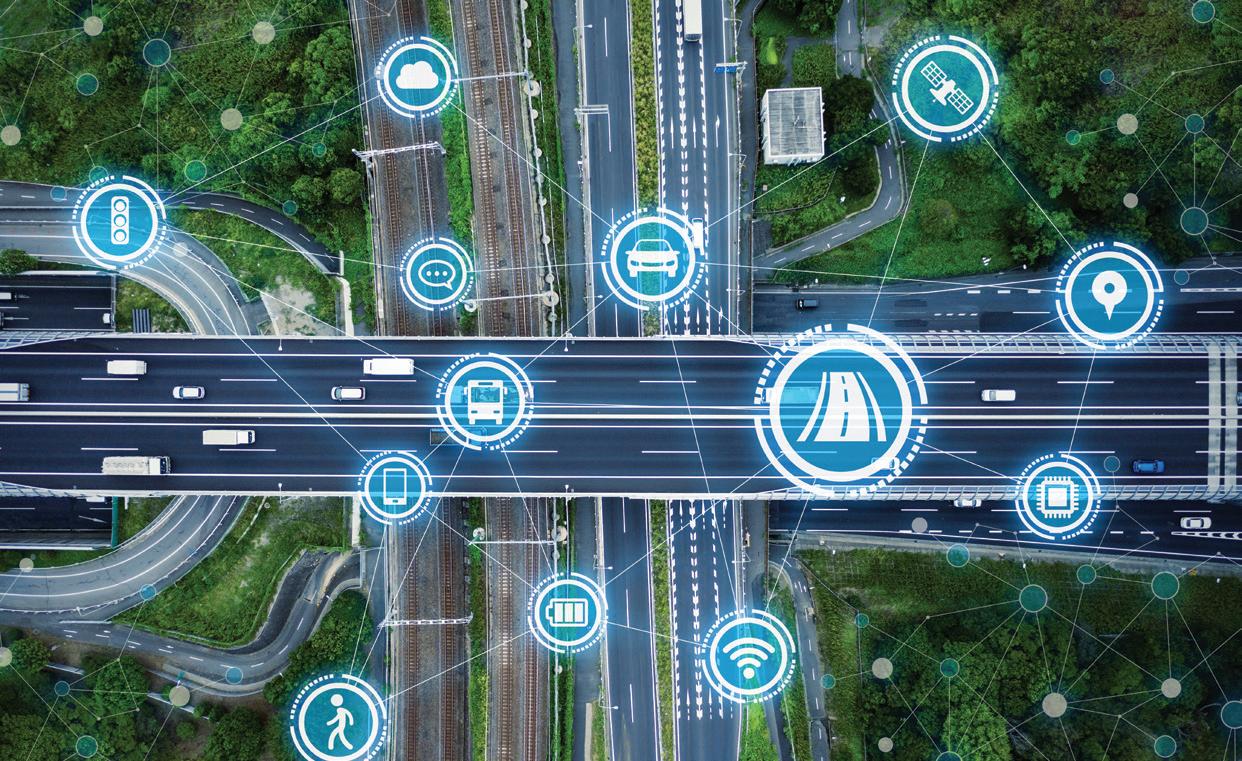

Australia's rail network faces a critical challenge in ensuring safety, highlighted by fluctuating rail incidents, including derailments and signal passings at danger. Fortunately, rapid technological advances of the past decade, such as AI, cloud computing, electric vehicles and even robot vacuums have provided unprecedented opportunities to enhance rail safety.
Notably, advancements in low power networks rolled out across Australia by companies like Telstra, combined with advancements in cloud computing, have opened up new possibilities for enhancing visibility on infrastructure in areas previously impractical or financially unfeasible.
The adoption of these digital solutions has enabled a shift from reactive to proactive strategies in rail operations, delivering immediate benefits in safety, cost, and efficiency. Leading this transformation in Australia is Kallipr, a company at the forefront of digitising industry globally.
Kallipr utilises network, cloud, and sensor technologies to digitise infrastructure, offering real-time monitoring and predictive analysis.
“With digital solutions, we're not just reacting to incidents; we're predicting and preventing them,” Gerhard Loots, CEO of Kallipr said.
Aurizon, Australia's largest rail freight operator, exemplifies the success of this digital integration. By incorporating Kallipr’s technology for track temperature monitoring, Aurizon has significantly enhanced its operational safety and efficiency. According to Mr Loots, "Our technology provides immediate insights into track conditions,
crucial for timely maintenance and significantly reducing derailment risks."
Moreover, the technology significantly reduces truck rolls – unscheduled maintenance and inspection visits – by enabling remote monitoring and diagnostics. This aspect not only cuts operational costs, but also minimises environmental impact by reducing fuel consumption and emissions associated with maintenance vehicles.
The versatility of new technologies in rail safety is further illustrated by Keolis Downer Yarra Trams’ collaboration with Kallipr. Initially developed for water overflow monitoring, IoT solutions have been adapted to prevent tram pit flooding, showcasing the innovative application of these technologies.
Digital technologies extend to various aspects of rail safety. Cloud-connected sensors deployed in flood-prone areas provide early warnings, while those in regions with extreme temperatures monitor cabin conditions, ensuring passenger and crew safety. Additionally, sensors on bridges and tunnels offer continuous data on structural integrity, enabling prompt responses to any detected anomalies.
Despite the benefits, integrating digital solutions into rail networks present challenges like complex deployment, effective data
management, and the need for real-time responses. Mr Loots said that the key to success is strategic, scalable integration, respecting the infrastructure's critical nature. Kallipr addresses these challenges with sophisticated solutions, including role-based access control and seamless cloud integration (both public and private).
The integration of digital solutions into rail operations has yielded substantial safety benefits, as demonstrated by Aurizon. Their experience with predictive maintenance enabled by new technologies has led to reduced delays and operational cost savings.
“Digital operations enable a proactive approach, ensuring smoother operations and a higher safety level,” Mr Loots said.
Looking ahead, the role of technology in rail safety is poised for further expansion, with AI and machine learning enhancing predictive capabilities.
“We are moving towards intelligent systems that anticipate and mitigate risks more effectively,” Mr Loots said, signalling a new era in rail safety where accidents are minimised, and operations are safer and more reliable.
Imagine if you could HALVE them.
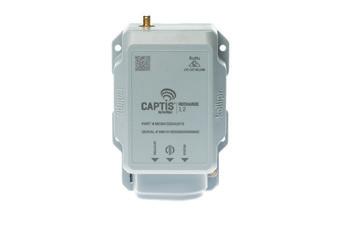
This can.
Kallipr is trusted by industry leaders to remotely monitor the extreme edge. Think, water levels in agricultural fields, track temperatures across rail networks, sewer systems under cities and any other critical data point in the hardest-to-reach places. Our industry-leading devices connect data from remote sites seamlessly into your existing platforms, delivering automated reports and instant alerts, reducing truck rolls and boosting efficiency in real-time.
Discover how Kallipr’s custom solutions can elevate your operations today.



Effective communication is paramount for success in any project, enabling leaders to navigate an intricate web of relationships and interests to create an environment built on trust and cooperation. In this article, we outline eight key tips that help make stakeholder management and communication a breeze.
In the infrastructure industry especially, managing a diverse range of stakeholders such as governments, local communities, contractors and investors can be the most challenging aspect of a project. Communication breakdowns can lead to project delays, legal disputes and reputational damage. That’s why conveying information clearly, transparently and in a timely manner is crucial.
Here are our top eight tips for effectively communicating with stakeholders:
1. Perform a stakeholder assessment
Conducting a comprehensive stakeholder assessment is a critical first step in any project. This process is essential to identify and understand the varied requirements, concerns and expectations of all involved parties. Communication strategies can then be tailored to the specific needs of different stakeholders.
2. Determine the right mode of communication
Recognise that not everyone prefers the same mode of communication. Some may respond better to faceto-face meetings, while others may prefer emails or digital platforms. Understanding these preferences enables project leaders to choose the most effective communication channels for different stakeholders, ensuring that information is disseminated in a manner that resonates with each group.
3. Encourage an open dialogue
Establishing an open and two-way communication channel is essential for creating transparency and minimising the risk of misunderstandings and conflicts. Ask stakeholders for their thoughts – do they have concerns, suggestions or feedback? Inviting stakeholders into the conversation can be done via meetings, emails or in-person events.
4. Be consistent
Consistent communication demonstrates a commitment to keeping stakeholders informed throughout the entire project lifecycle. Regular updates and progress reports help maintain stakeholder confidence and build a sense of reliability. It’s also important to maintain coherent messaging across channels and interactions.
5. Utilise structured formats
Deliver automated email updates, periodic newsletters or scheduled meetings to ensure stakeholders receive a consistent stream of information. Frequency of updates can be tailored to each stakeholder, depending on their specific needs, level of involvement and the criticality of the information.
A weekly digest, for example, could include budget updates, photos and next steps.
6. Get creative
Traditional methods of communication have their place in keeping everyone regularly informed, however, there’s more in the toolbox than just emails and newsletters. When it comes to effective engagement with stakeholders, video presentations, virtual town halls and social media are just some of the ways you can diversify your communication approach.
7. Leverage informal communication methods
Informal methods such as workshops, interactive events or lunches offer a more personalised and dynamic approach to stakeholder engagement. This also offers an opportunity for active participation. If done right, these events can make stakeholders feel more valued and connected to a project’s success, proving more effective than formal approaches.

8. Create a centralised information hub
Establishing a centralised and easily accessible online platform for project documentation, real-time updates and FAQs ensures stakeholders can quickly find the information they need. Adding visualisations and interactive maps can also increase the engagement of such platforms, while online panels can allow stakeholders to input feedback at their convenience.
Considering the various stakeholders involved in infrastructure projects, being adaptive when it comes to communication strategies can ensure messages are delivered in a way that meets the unique needs of each group. This is key to fostering a connected, informed and engaged stakeholder community.


With responsibility over key commercial shipping ports, Port Authority of New South Wales (Port Authority) turned to digitalisation to visualise its assets and facilities in a digital twin. This innovative project earned Port Authority an award for digital innovation, with the digital twin enabling remote monitoring, improving understanding of port activities, and driving environmental initiatives.
Port Authority is a state-owned corporation that acts as the Harbour Master for NSW’s six commercial seaports, with responsibility over operations, emergency response, security, safety and navigation for commercial shipping in Sydney Harbour, Port Botany, Newcastle Harbour, Port Kembla, Yamba and Eden.
Port Authority’s survey group, based in Sydney, is responsible for all the hydrographic survey and mapping for each of the port sites on the east coast of Australia, which often means

time-consuming site visits to inspect assets across the state.
Relying on 2D maps and plans, Port Authority turned to advanced technology to streamline operations and incorporate various forms of data to develop a fully-realised digital twin.
Following the privatisation of landside operations at Port Botany, Port Kembla and Newcastle, Port Authority had teams working across the state on different sites, which only highlighted inefficiencies when it came to sharing data and information.
“Port Authority historically operated with separate systems for different functions, leading to data silos and inefficiencies. Information across various documents and spreadsheets made it difficult to access and analyse data holistically,” a spokesperson for Port Authority said.
“In addition, data was often manually entered into spreadsheets and reports, consuming considerable time and resources.”
For example, previously, its ship planning processes involved a labourintensive procedure where the Harbour Master or their representative would hand draw a ship or use a cardboard
cutout onto a paper chart. The mapping specialist would then need to add the ship into a CAD model to run cross sections at various points along the ship, which was used to assess under keel depth for safe operation in shallow water. Afterwards a paper plot would be discussed and the berth arrangement finalised before approval would be given for the ship to berth.
This lengthy process would take weeks to complete and had to be started months ahead of a ship entering port, further highlighting the need for processes to be digitised and streamlined.
With more external organisations requiring Port Authority data, there was a clear incentive to streamline the link of information into one easy to use hub. However, gaining an accurate indepth view of Port Authority’s physical assets is extremely difficult, especially for a business that spans across the entire state.
Port Authority sought to create a dynamic digital representation of its physical assets across six geographically dispersed ports, accessible to multiple departments and stakeholders to improve collaboration, decision-making, and operations, creating a single source of truth with a digital twin.
Port Authority selected Bentley Systems’ ContextCapture to create accurate 3D reality models of the port sites, and OpenCities applications to establish a GIS and digital twin platform for remote asset inspection. Drones were used to capture imagery of the facilities and assets that could be recreated as 3D reality models in OpenCities Planner.
Setting up this digital twin helped streamline workflows and reduce travel between ports by facilitating remote asset monitoring, optimising collaboration and accurate data sharing among departments and stakeholders, which is expected to save 50 per cent in working hours compiling data requests and mapping queries.
Demonstrating successful digitalisation, the project was a finalist at the Bentley Going Digital in Infrastructure Awards 2023 in the Facilities, Campuses & Cities category.
“The Bentley Awards bring together leading professionals from across the infrastructure industry. Being a finalist meant having access to cutting-edge ideas, technological advancements, and best practices on the world stage,” Belynda Gibbons a Port Authority spokesperson said.
“Being able to interact with the latest technology, and to talk with passionate people about what other countries are doing in the sustainability and environmental space was definitely inspirational.”
While the maritime sector has historically relied heavily on paper, the rise of digitalisation has greatly improved safety, providing accurate,
real-time vessel positioning, and up-todate charts.
Port Authority's vision of one team, one port, one culture has informed digitalisation by focusing on implementing systems that can streamline data sharing and encourage collaboration.
A Port Authority spokesperson said that the success of digital twins is especially beneficial for companies like Port Authority that have assets spread across a large area, making access for different team members difficult.
“The comprehensive data visualisation and simulation capabilities of the digital
twin provides Port Authority with valuable insights to support informed decision-making at all levels, from strategic planning to daily operations,” a spokesperson said.
“The move to GIS has allowed mapping information to be provided to users dynamically, accounting for changes as they occur while keeping a single point of truth. The movement from 2D drawings to 3D models has led to more accurate and intuitive information for users, who no longer need to make abstractions from 2D information.

“The digital twin allows any staff member who needs to find the latest and most accurate information about an asset to do so from wherever they are located. It also allows team members from different ports to collaborate on projects and planning in the same digital space, ensuring they’re using the same information to arrive at the best possible solutions.
“The digital twin can act as a platform for sharing information and updates with stakeholders, including government agencies, port users, and the community. This has increased
transparency and facilitated better collaboration on infrastructure projects.
With assets spread across the state, a digital twin becomes a tool to remotely monitor assets and environments to provide a bigger picture. For Port Authority, these digital 3D models and GIS system allow teams to zoom in on the details while also zooming out to consider the local environment.
“Digital twins can be used to visualise and simulate the impact of new developments on existing infrastructure,
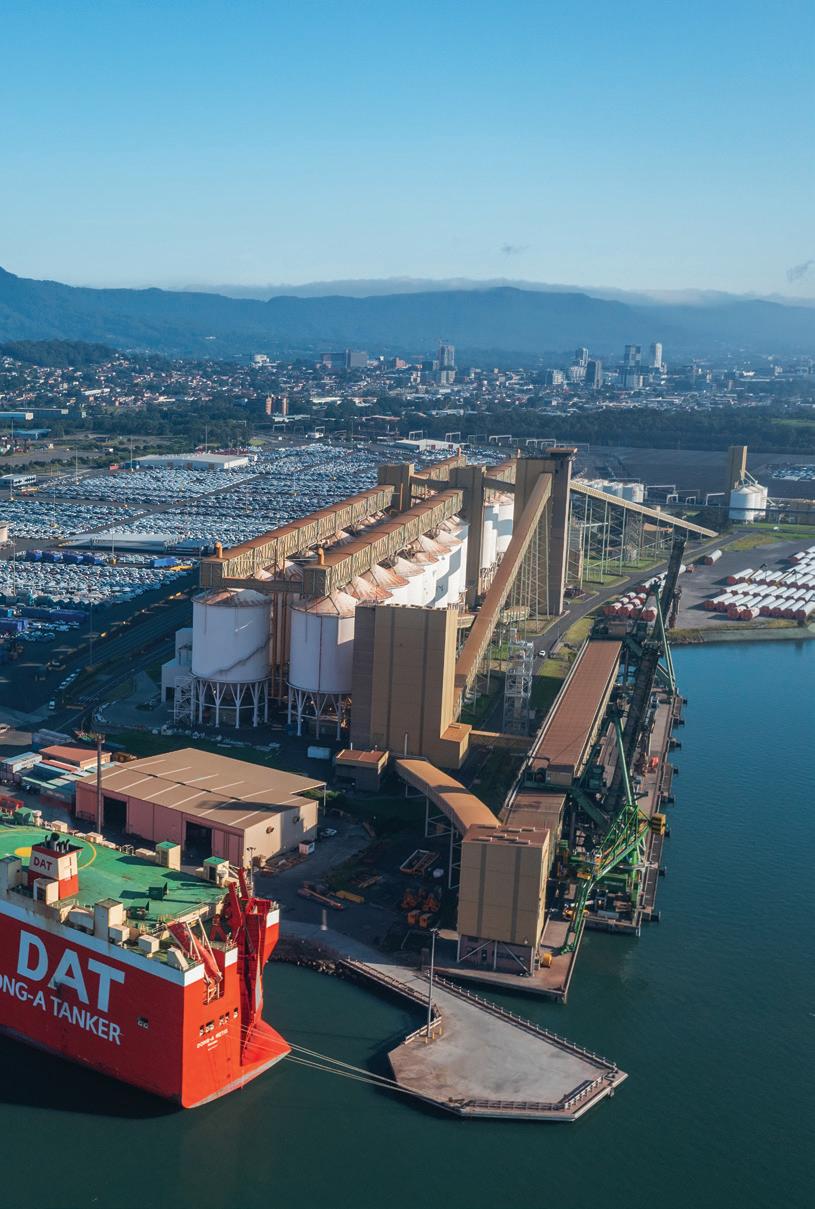
traffic patterns, and community well-being, which can be particularly beneficial for large-scale projects like smart cities initiatives or urban renewal initiatives,” a spokesperson said.
“By leveraging real-time data from sensors, historical records, and simulations, engineers and project managers can optimise infrastructure placement, resource allocation, and traffic flow, leading to more efficient and resilient infrastructure.”
As these modelling systems draw in data and information from various sources, Port Authority has leveraged the technology to help direct sustainability projects.
“The software includes tools for assessing the environmental impact of infrastructure projects, such as energy consumption, emissions, and resource usage as well as model and manage natural resources like water, forests, and protected areas.
“This can help planners design more sustainable projects that minimise environmental footprint and make more informed decisions about resource allocation, environmental protection, and disaster preparedness.
“As an organisation, we are also working to achieve ambitious sustainability targets to reduce our environmental footprint. Our model aims to use digital twins to simulate various scenarios and optimise operations for lower emissions, waste generation, and water consumption and minimise environmental impact.”
With the digital twin already proving successful for Port Authority, the next step in its digitalisation journey is to continue developing its 3D models and systems to attain even better accuracy and insights.
“The GIS is currently the beginning of a full digital twin,” a spokesperson said.
“In 2024, Port Authority is aiming to capture more 3D reality models using drone flights, iTwin Capture Modeler and link these to the various systems and sensors used across the ports creating a fully functioning IoT ecosystem.”
Digital twin technology has already contributed to a better understanding of these key port assets in New South Wales, as well as driving sustainable initiatives for operations, but this is only just the beginning of innovative visualisation.
Airport
Smart
Freight
Funding/investment
Intelligent
Sustainability


While traditional trade publications have quality audiences and high levels of trust, they can lack the full range of services to guarantee a return on your investment. And while traditional marketing agencies offer the latest marketing techniques, they don’t have the audience or the industry understanding the B2B sector needs.
Monkey Media is the missing link that brings together a trusted brand and powerful audience, with a complete agency offering.
TO FIND OUT MORE SCAN THE QR CODE NOW

